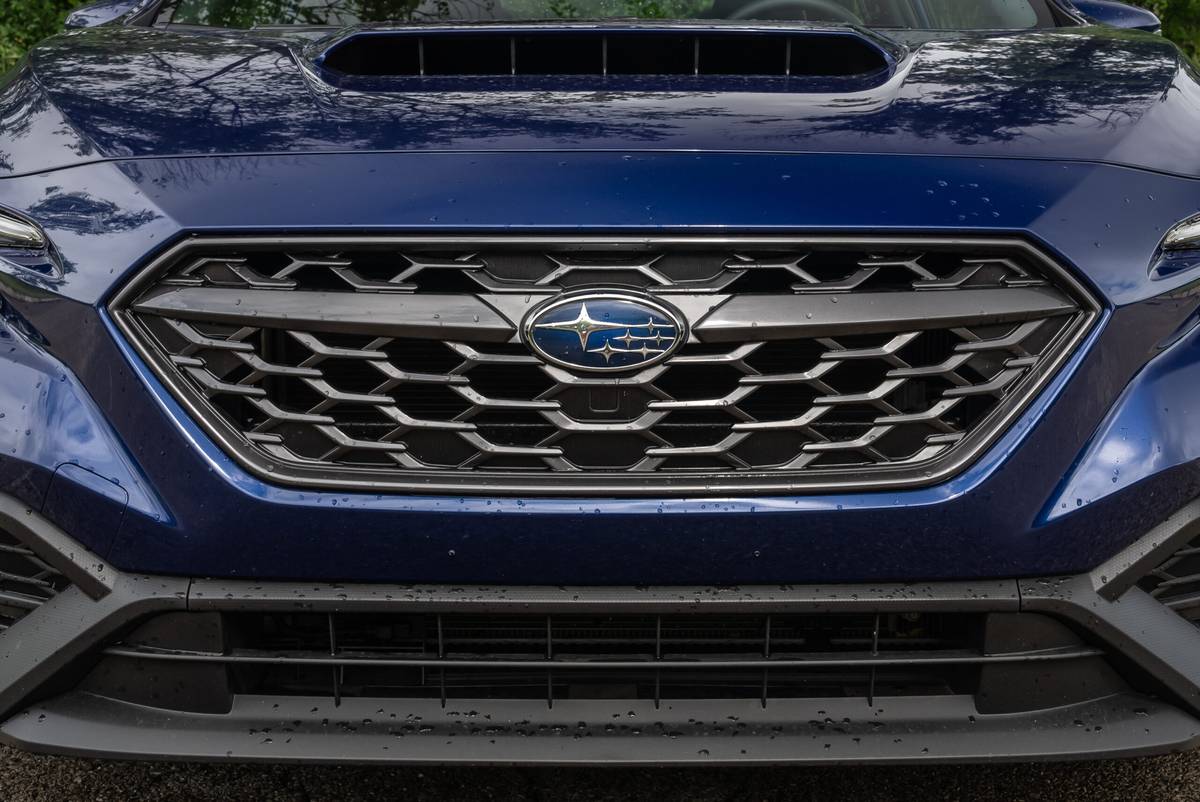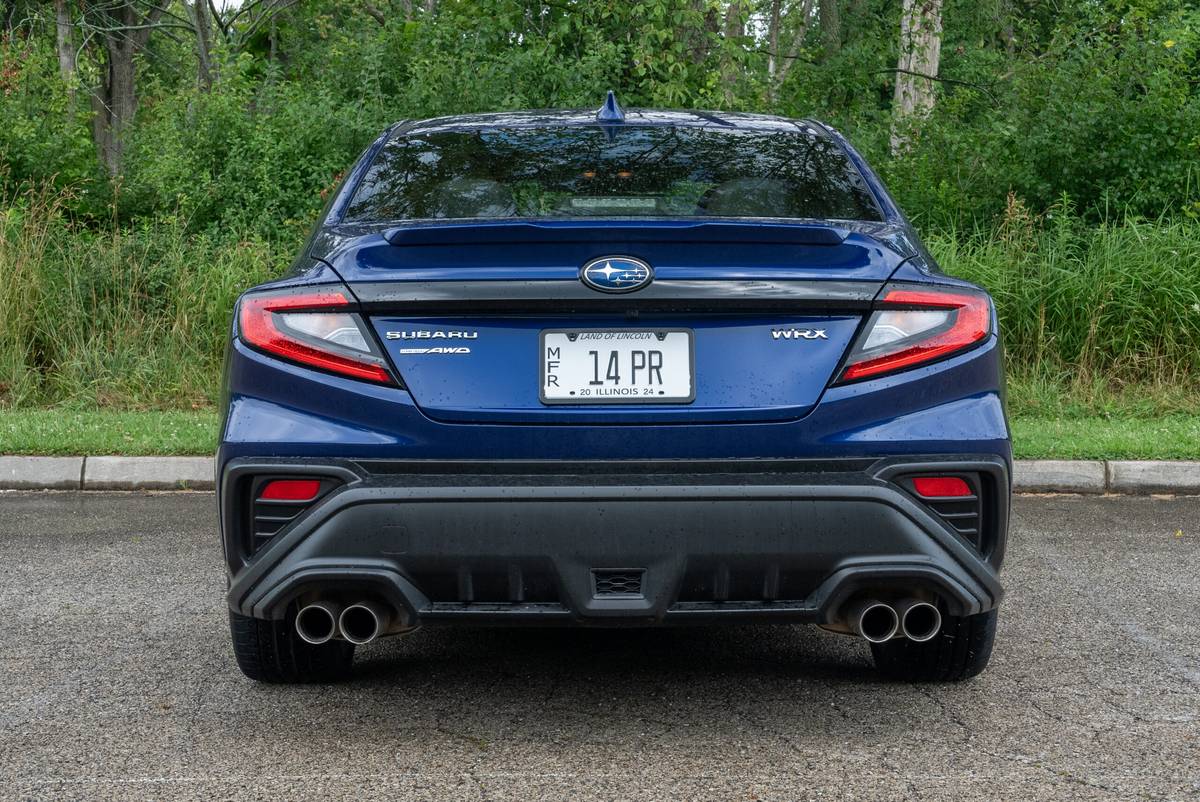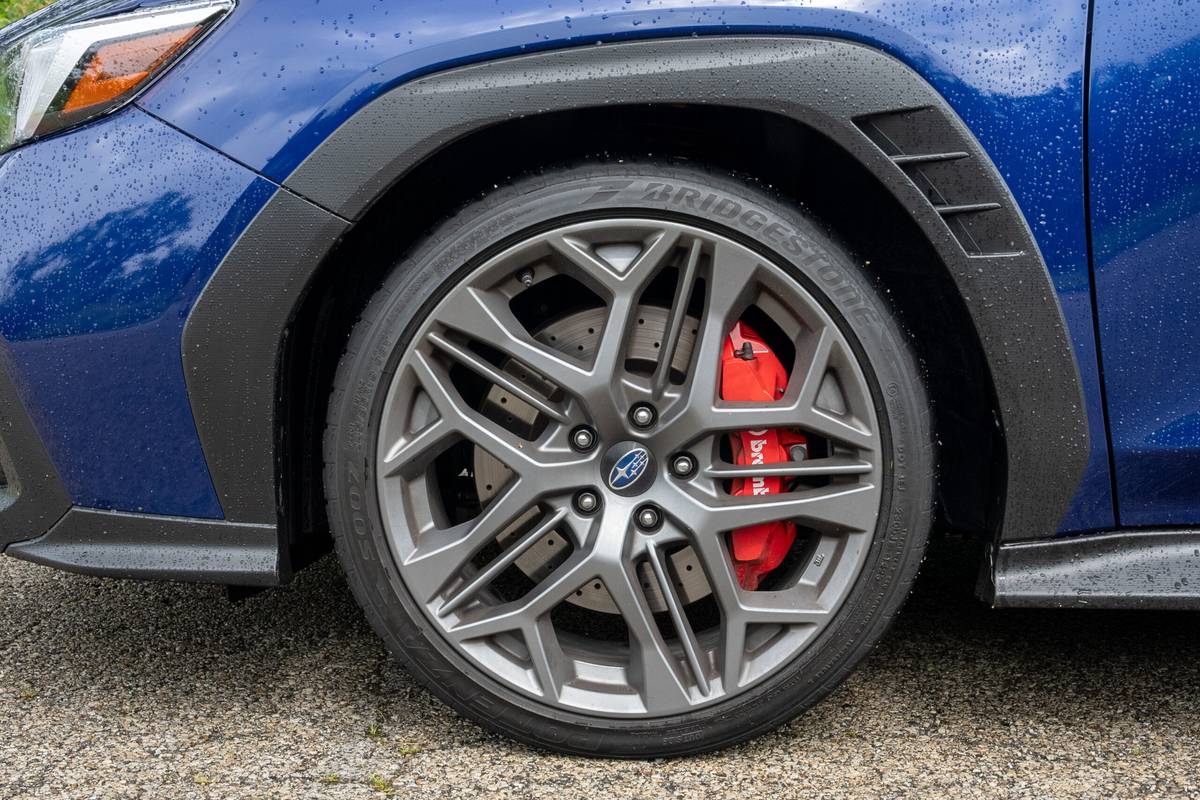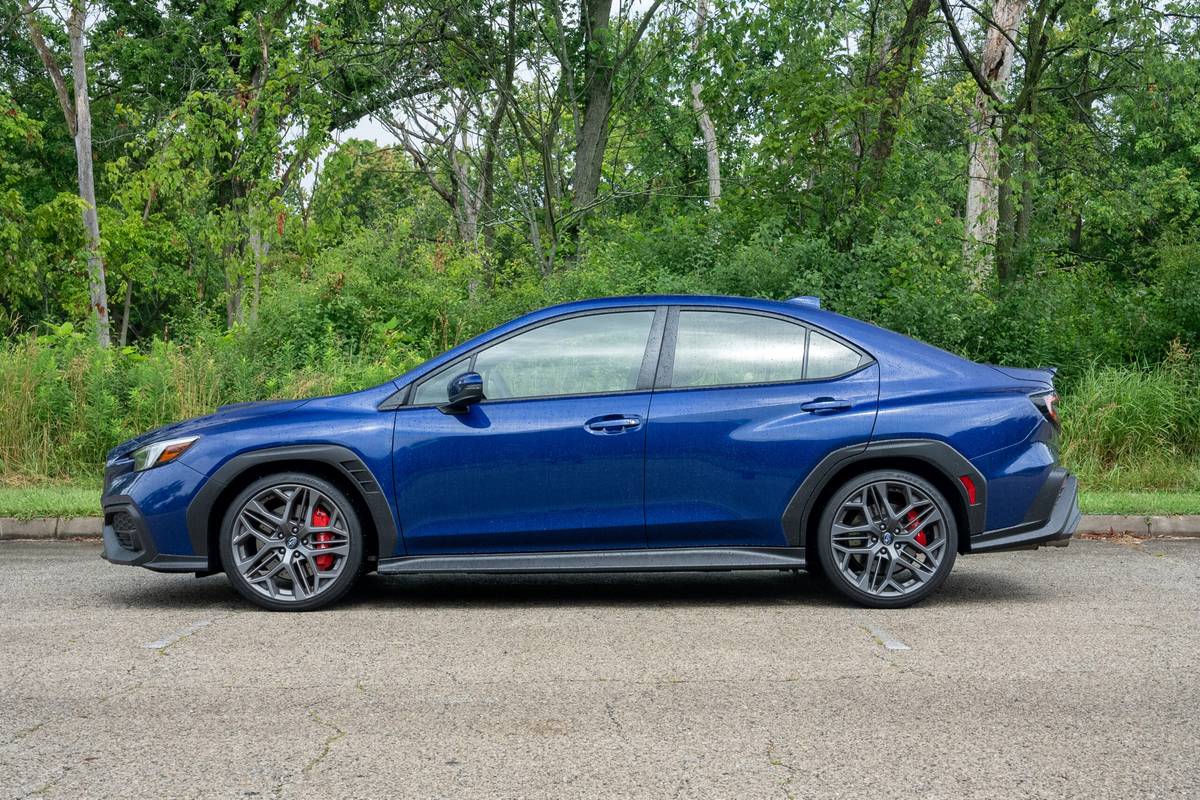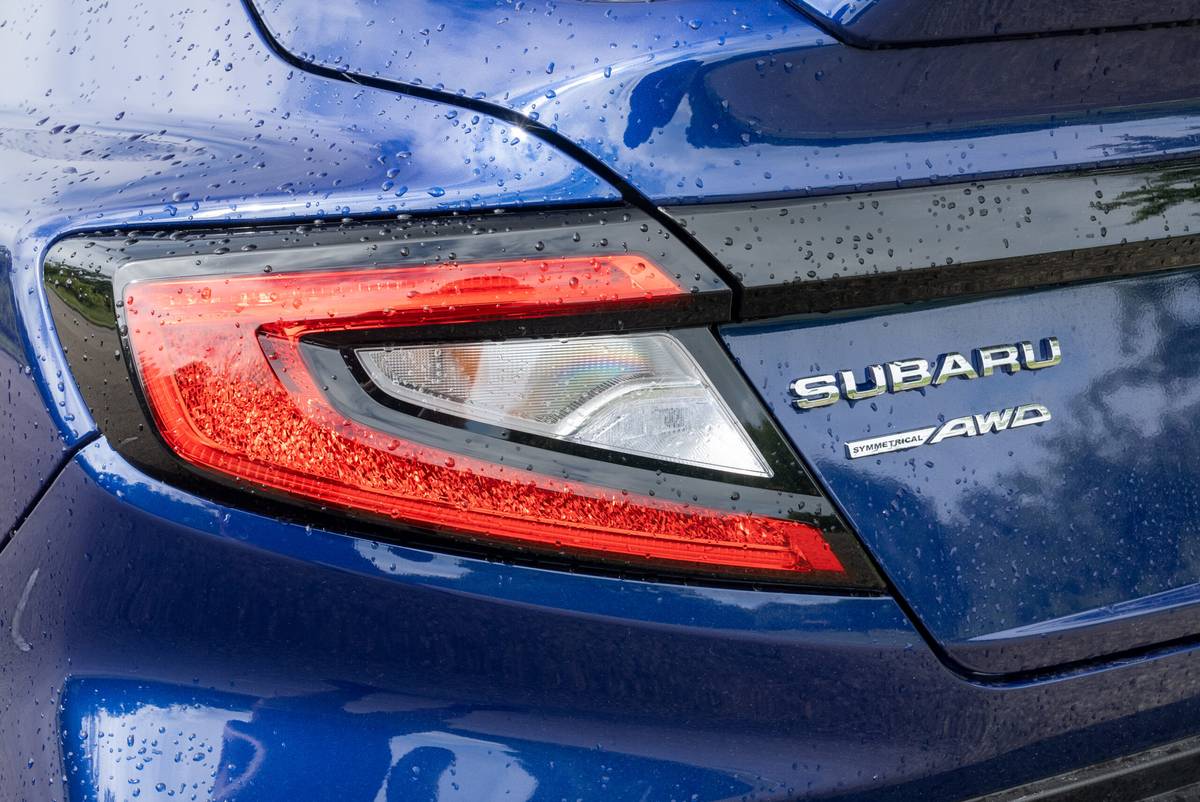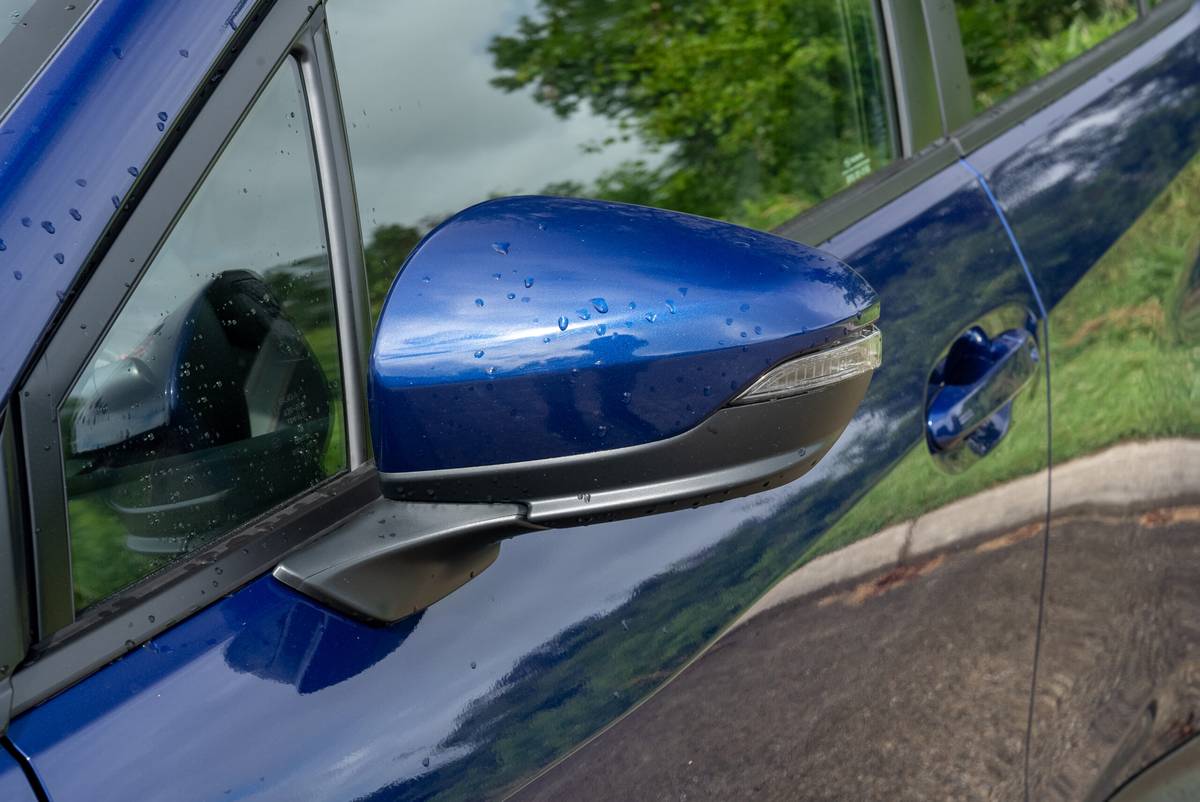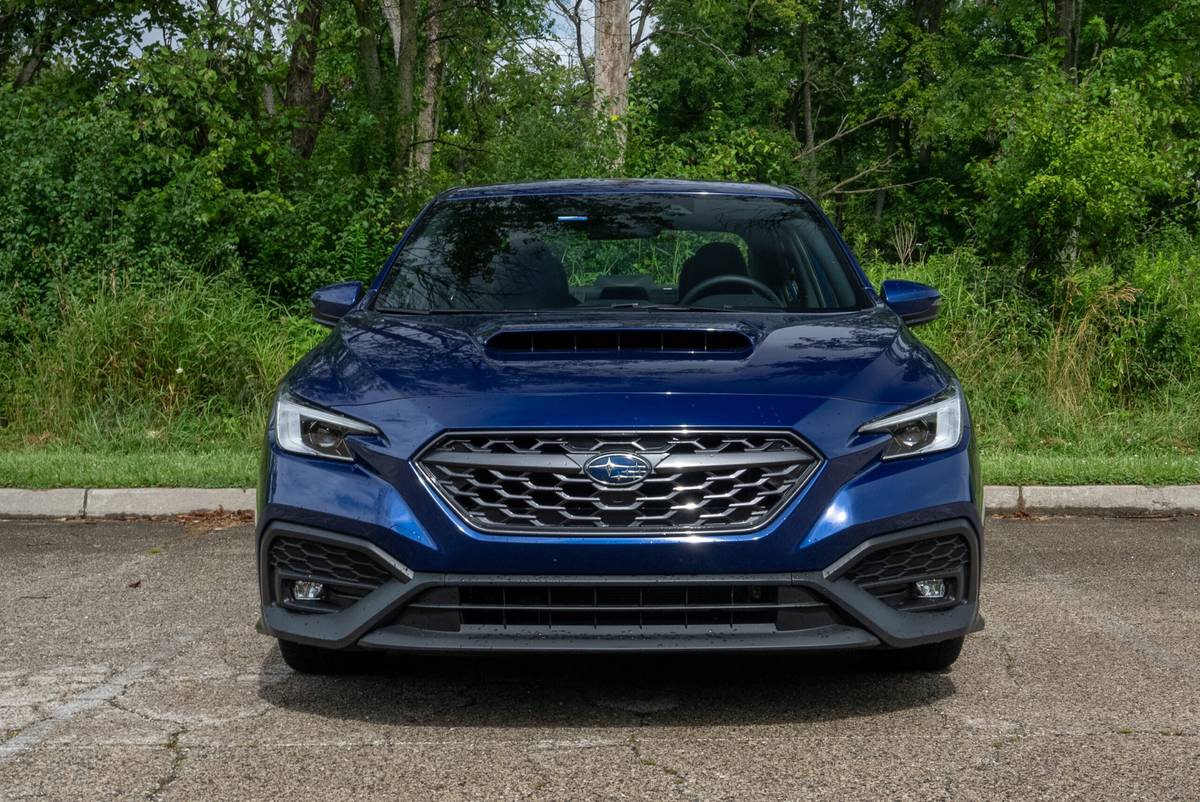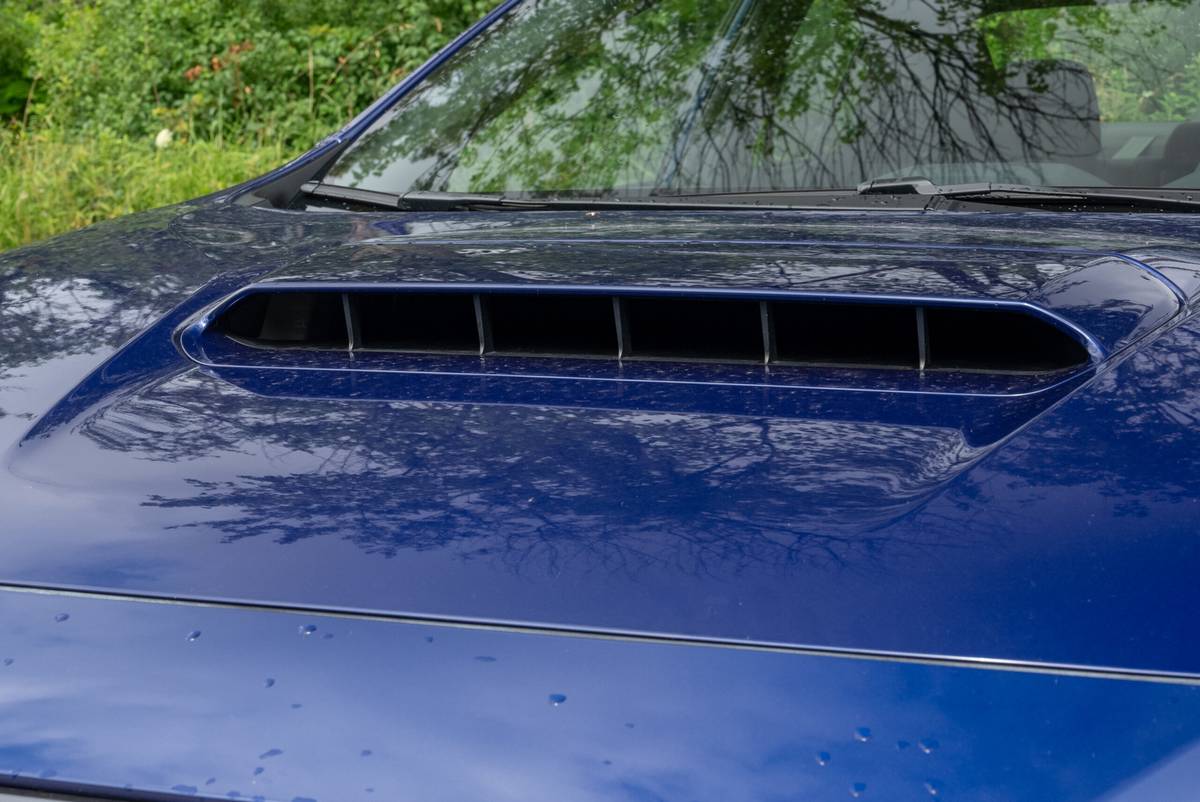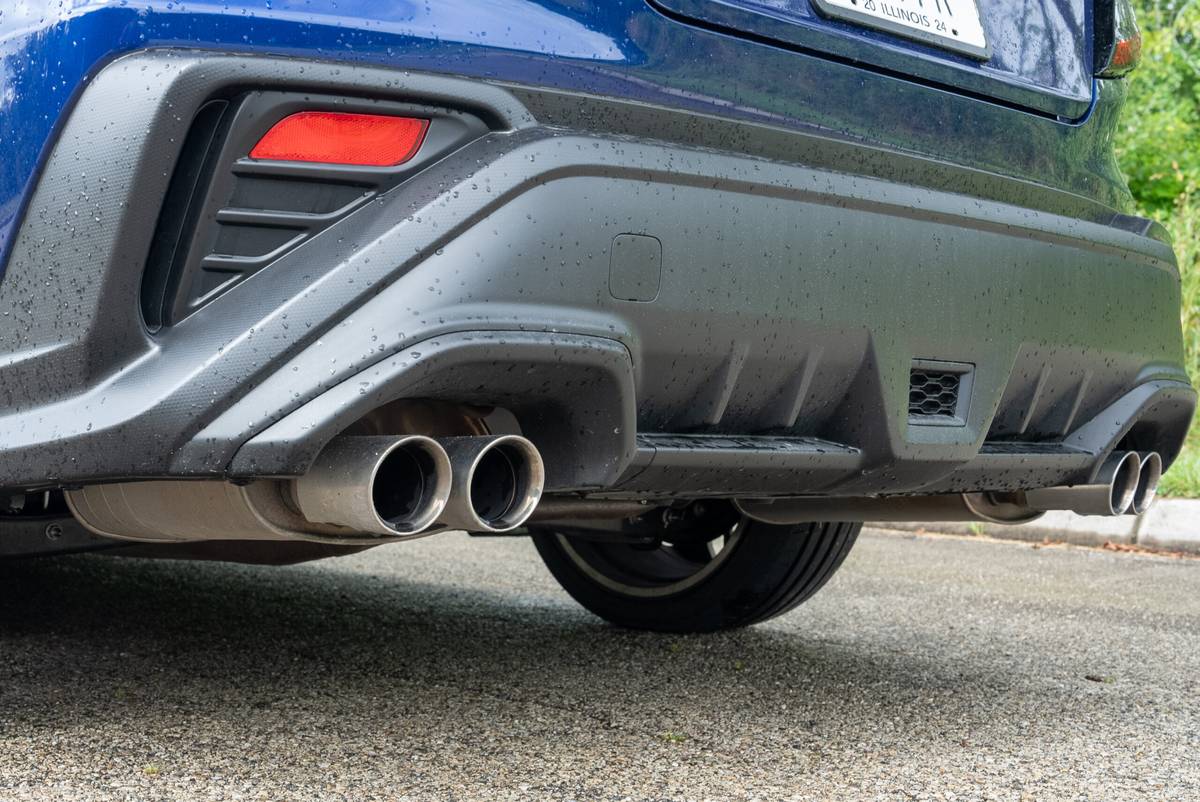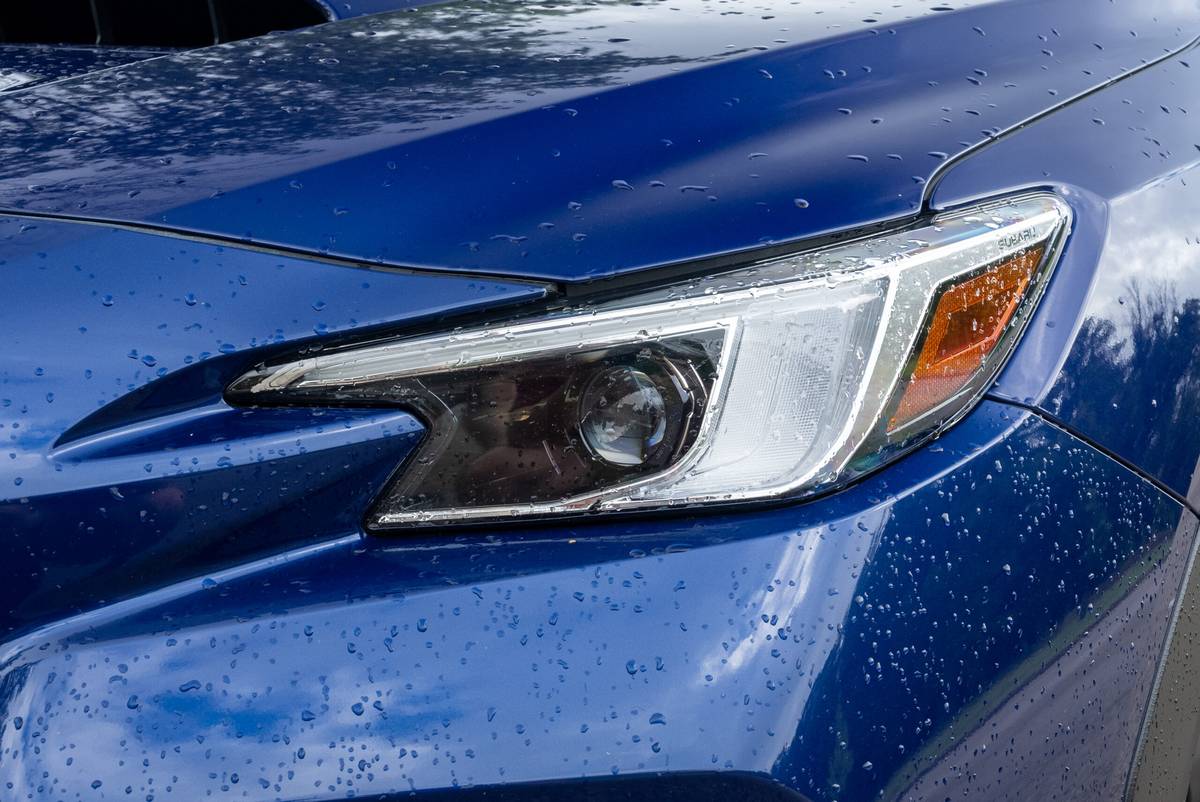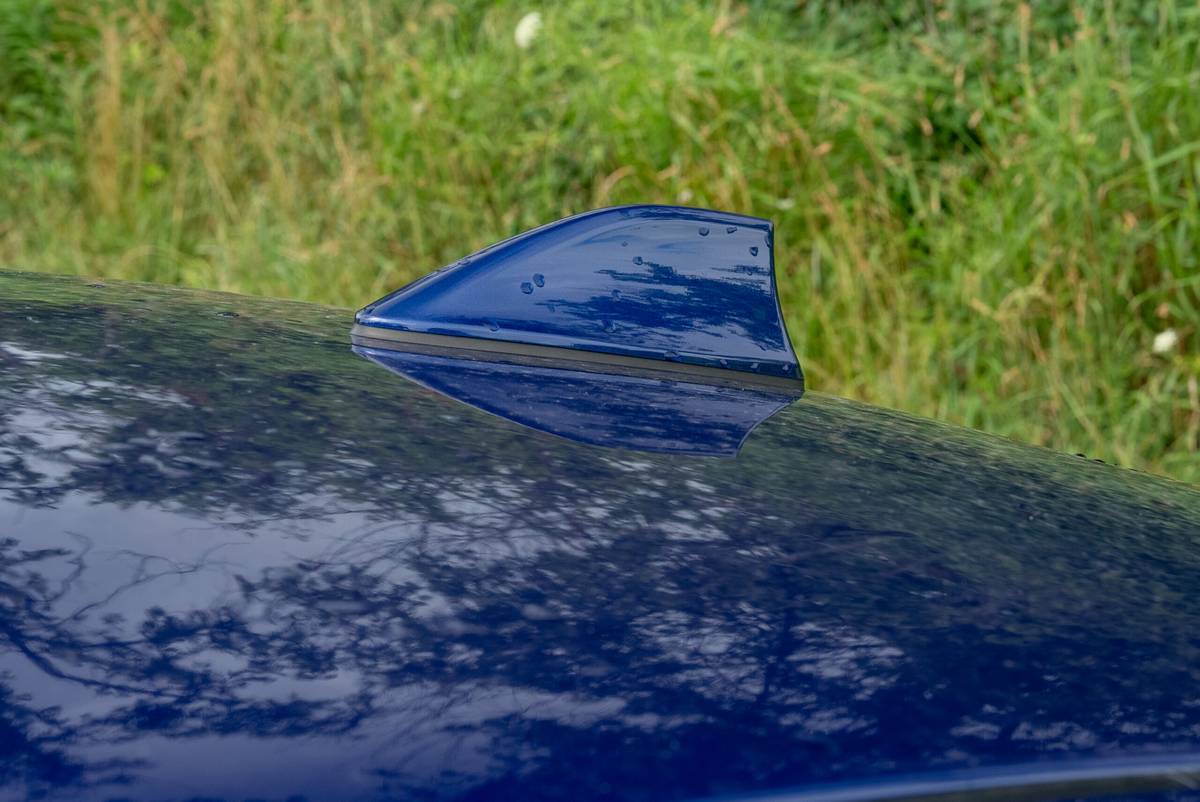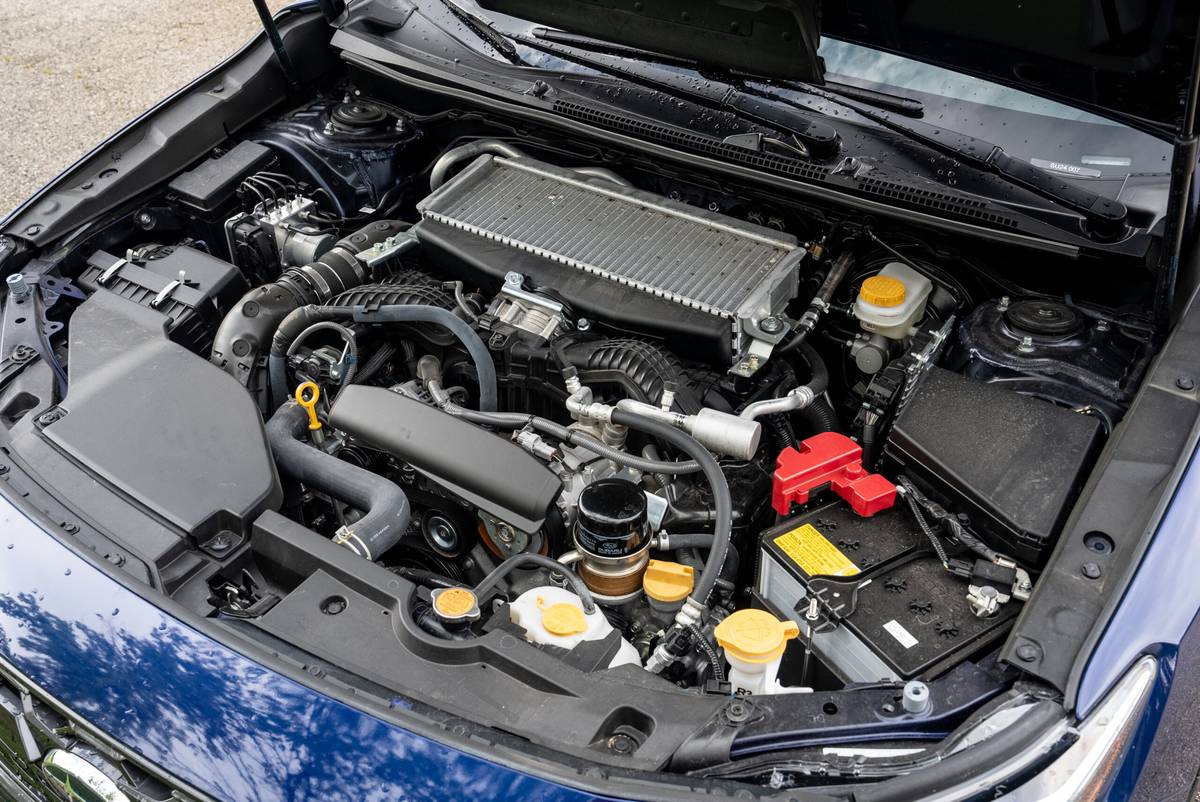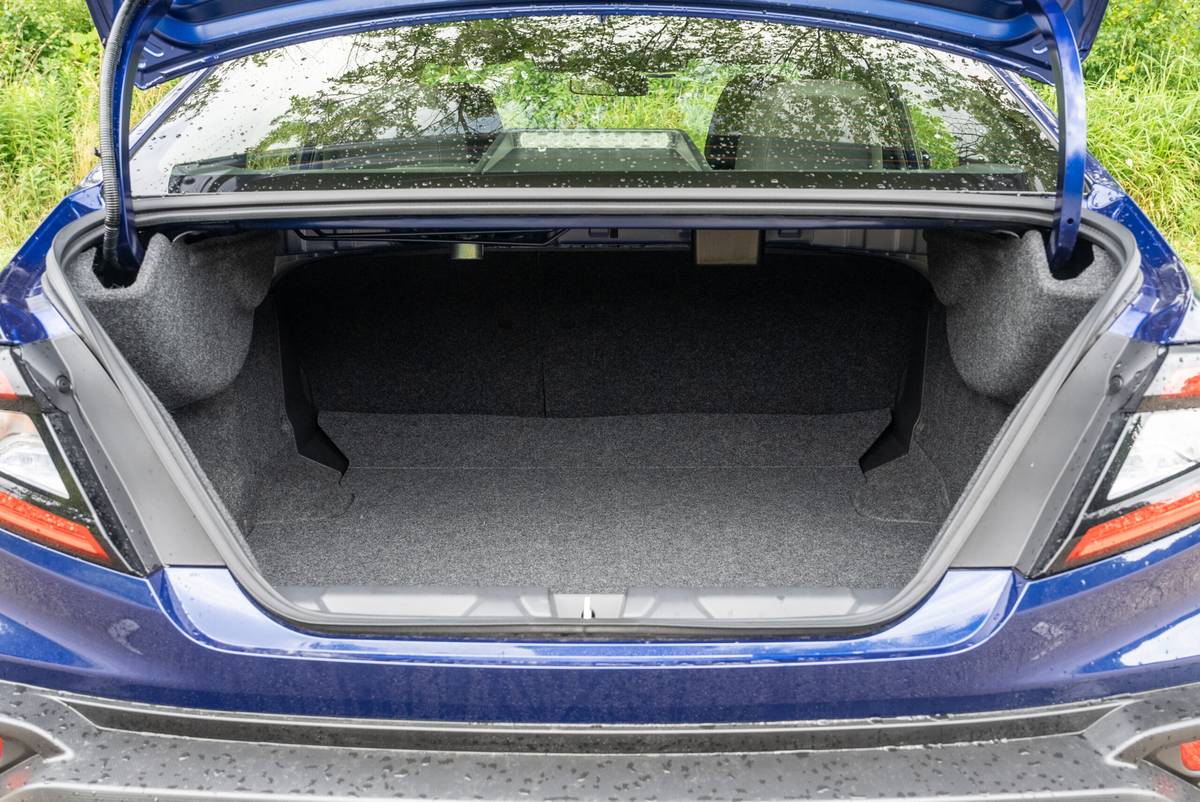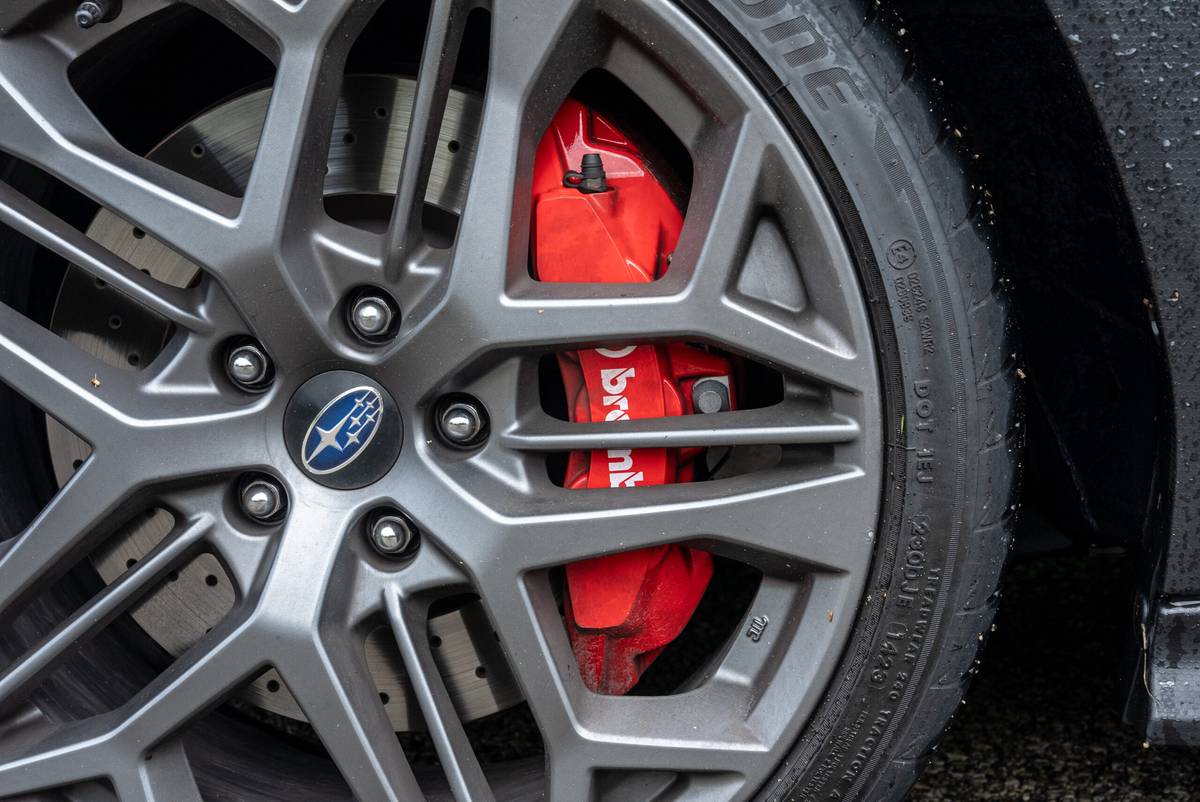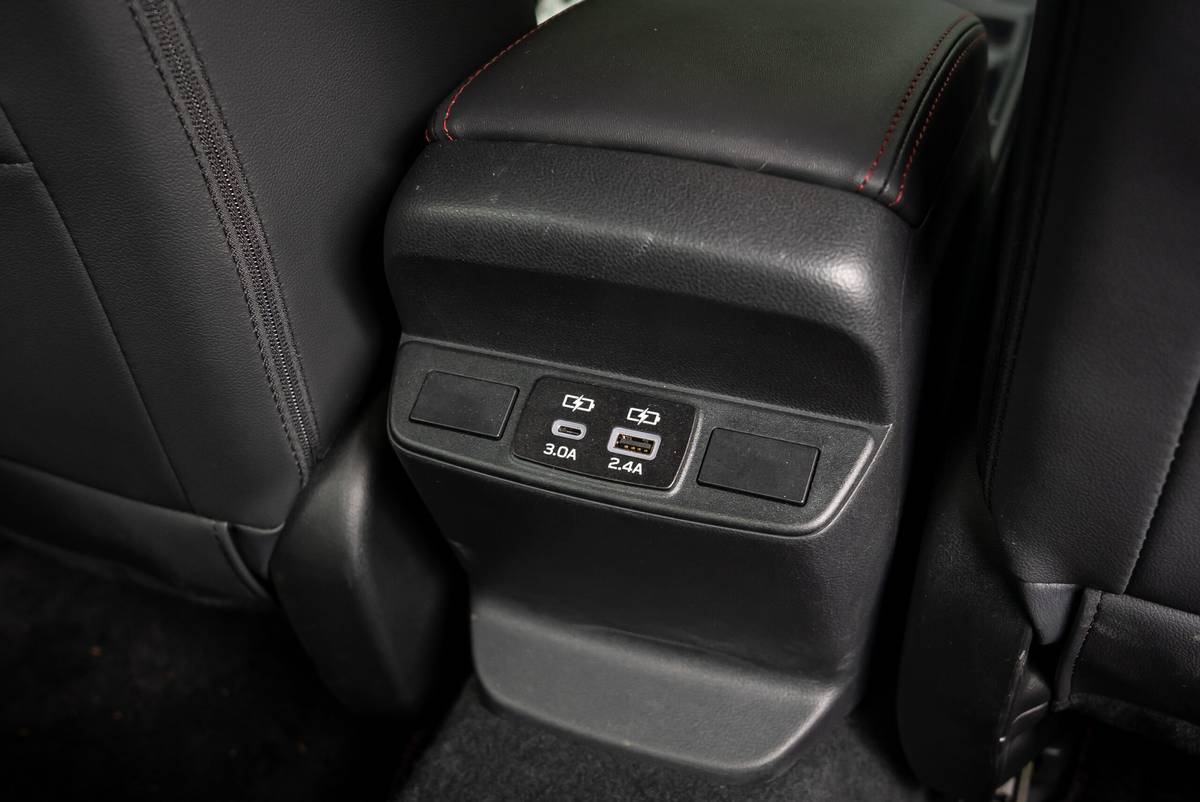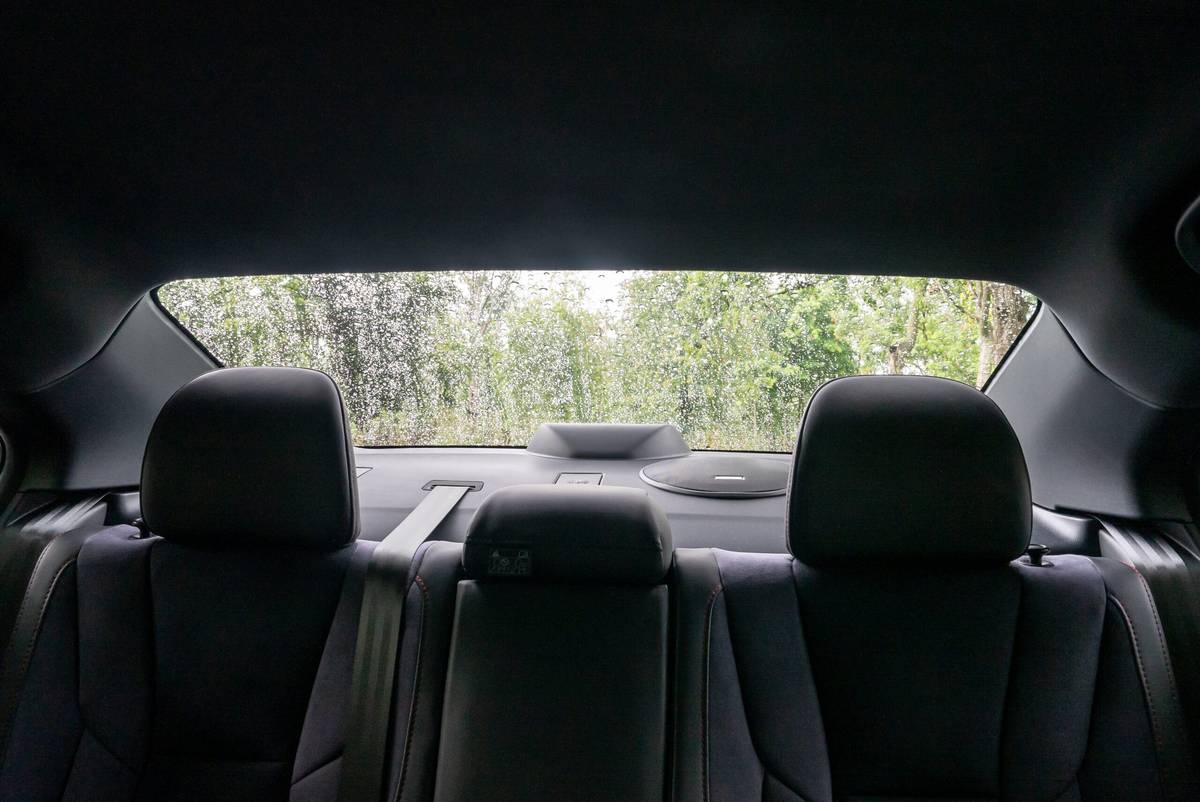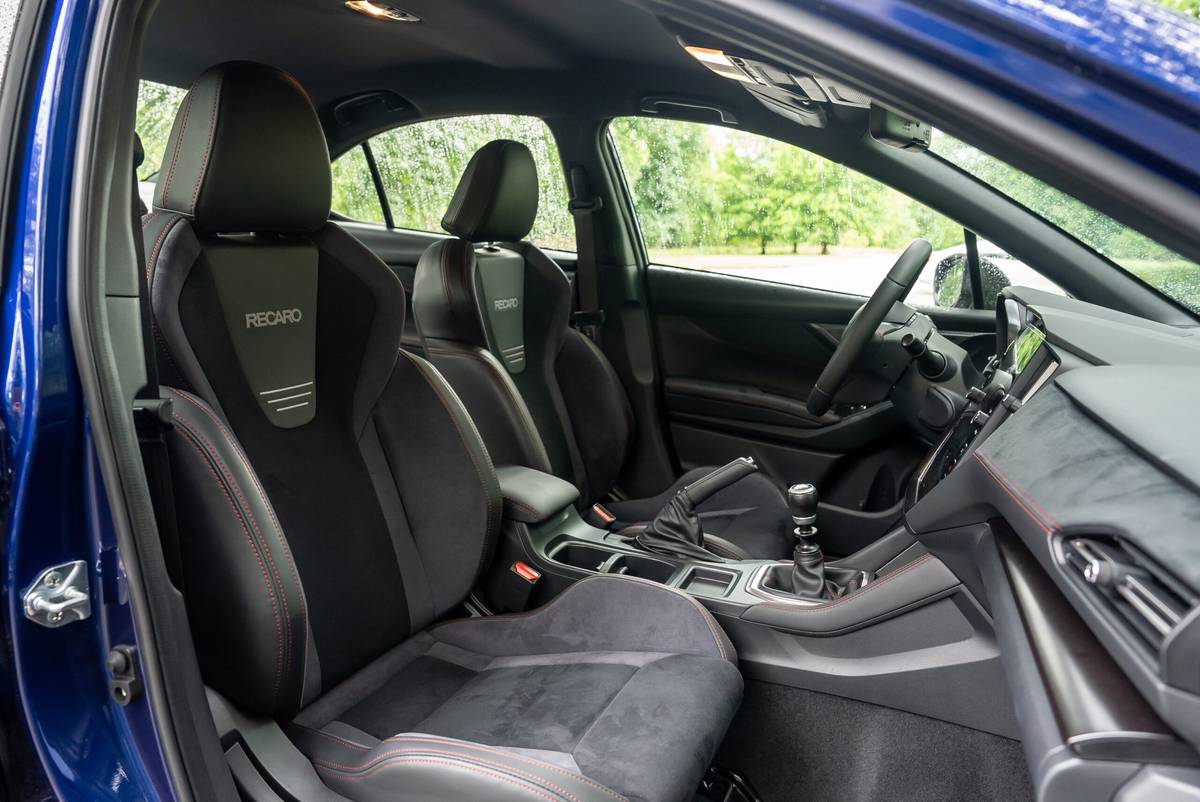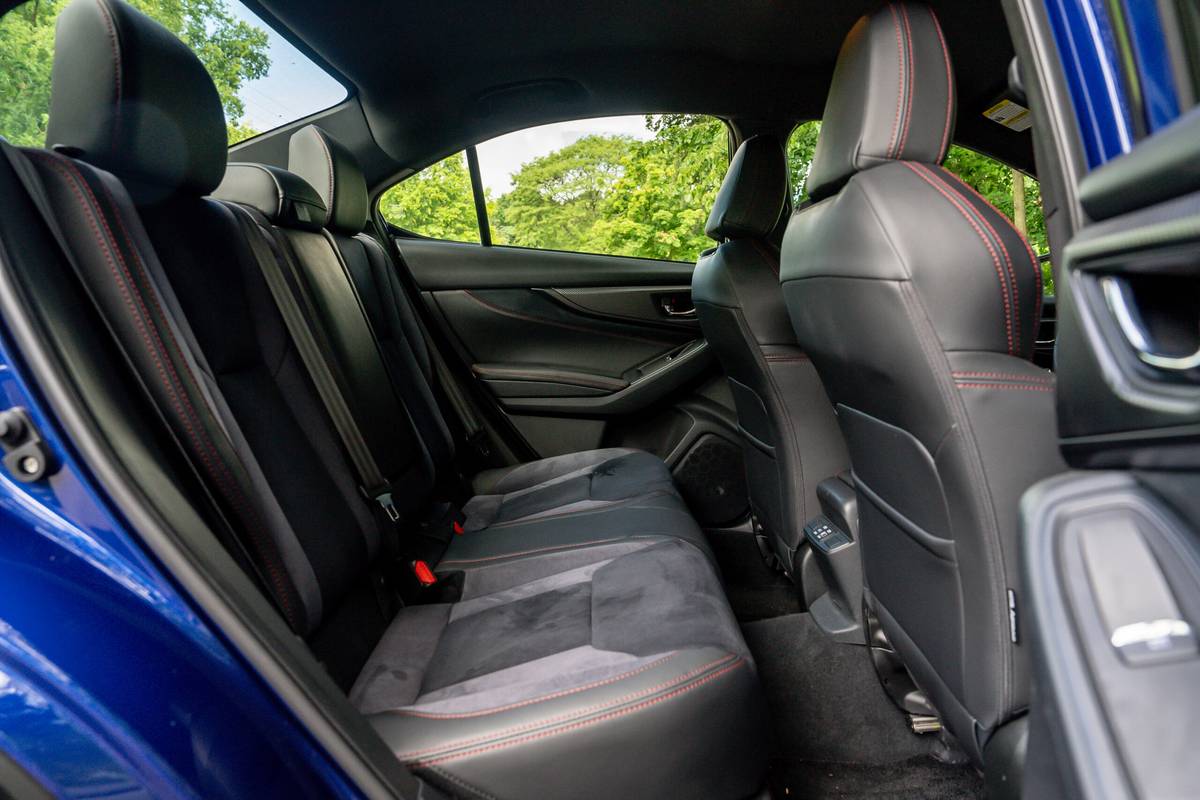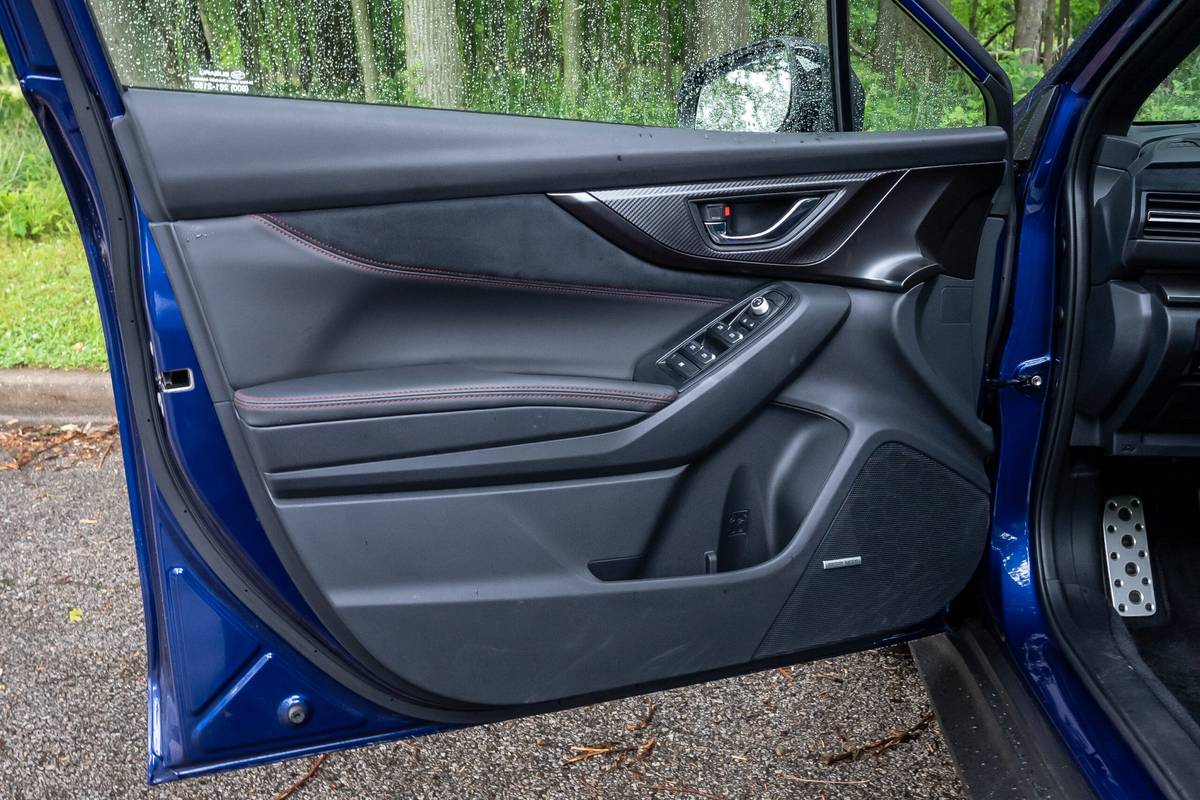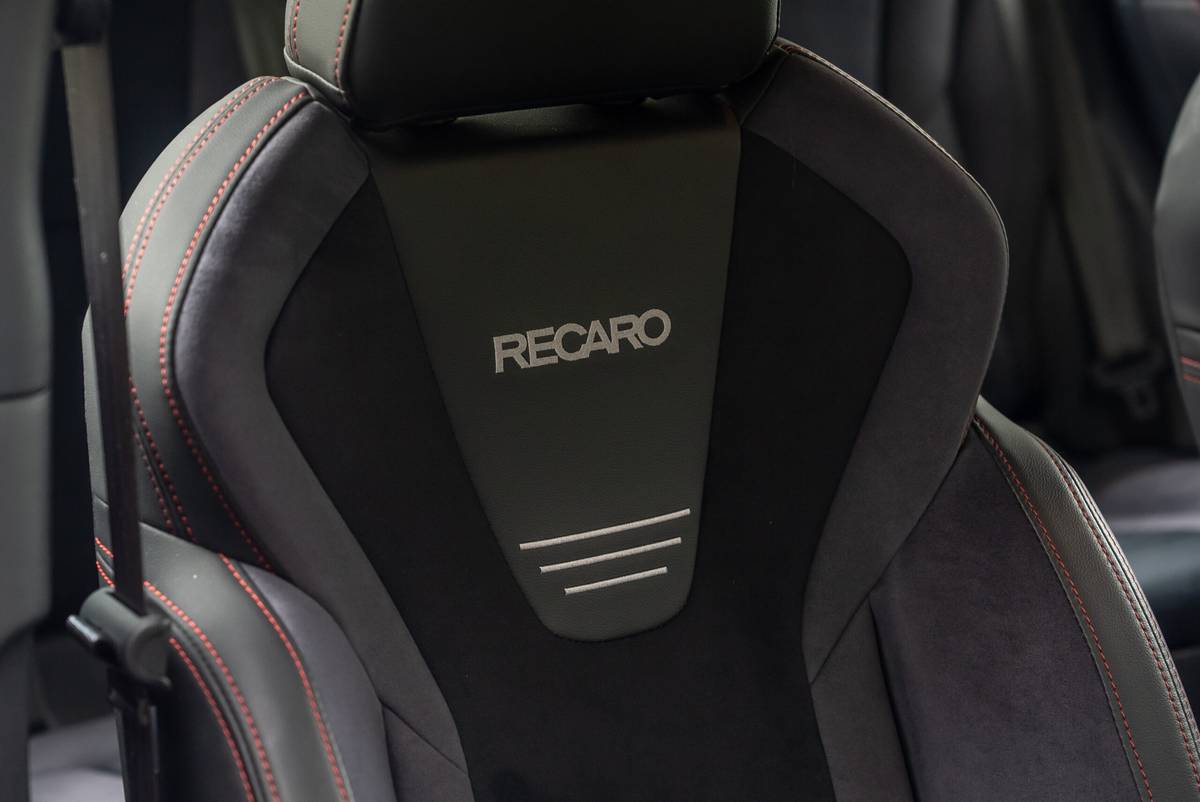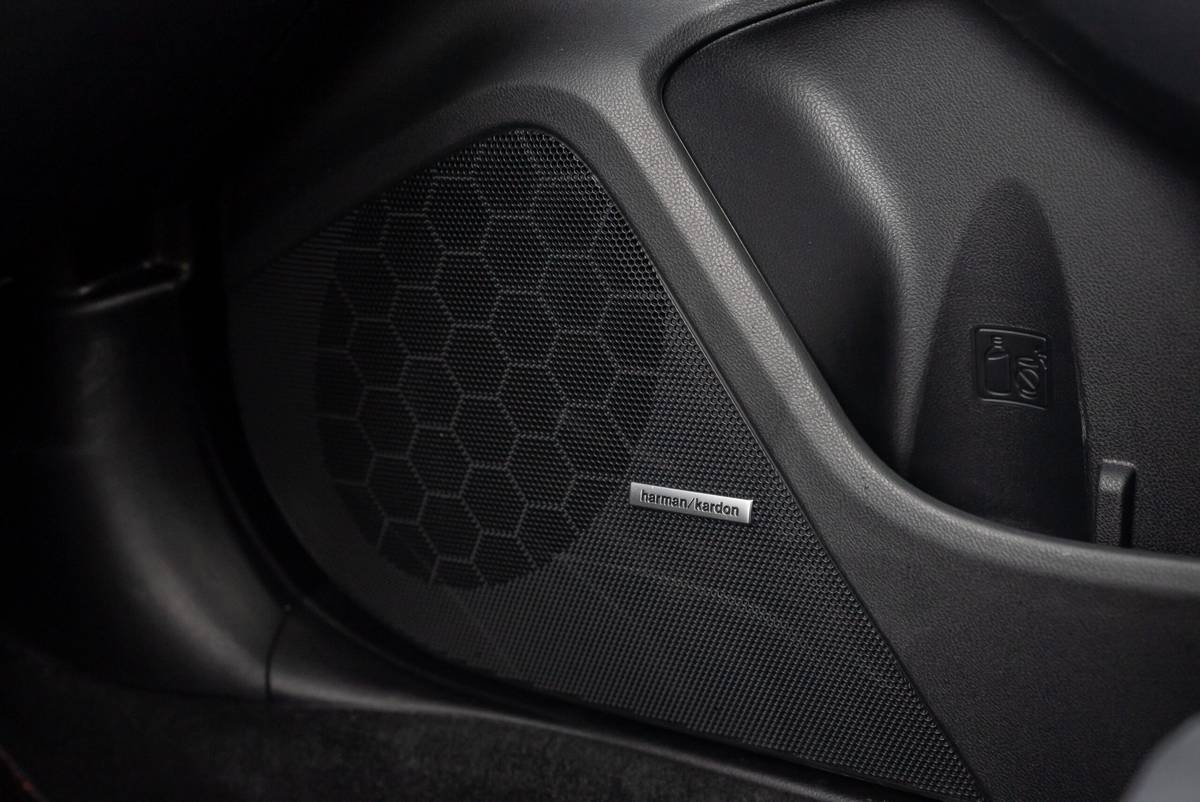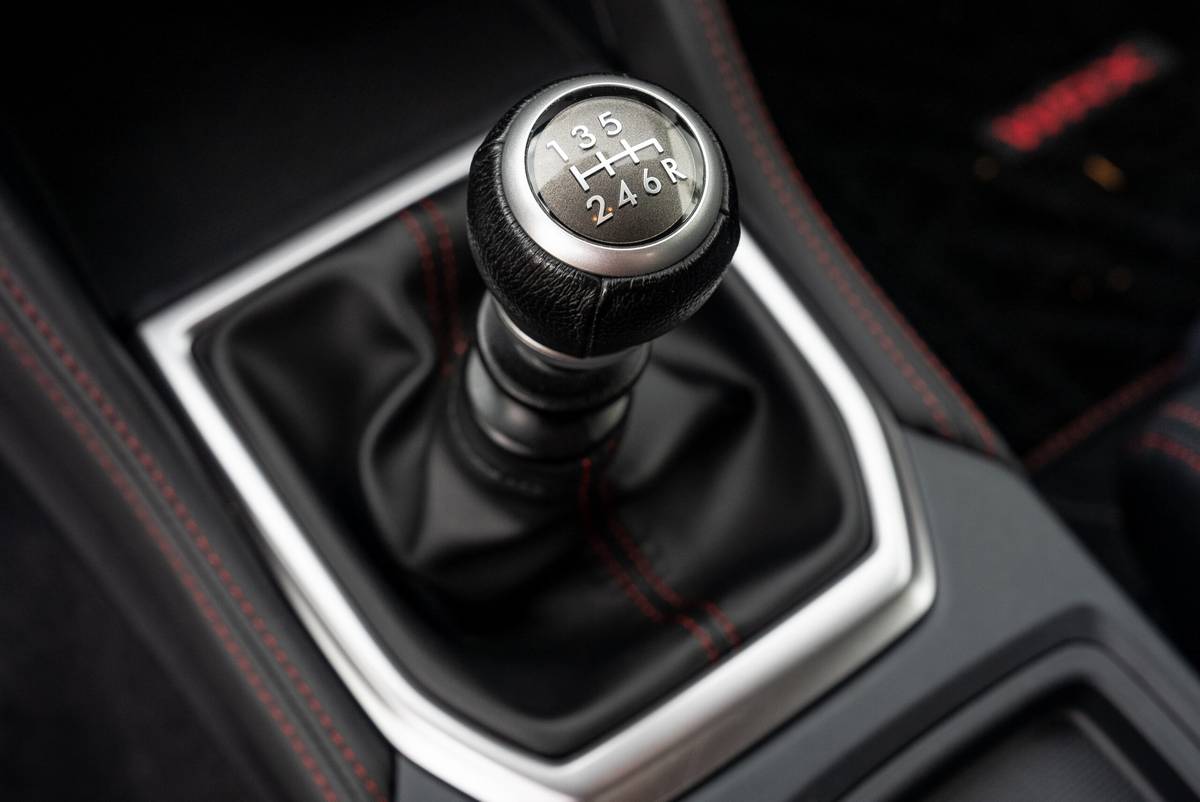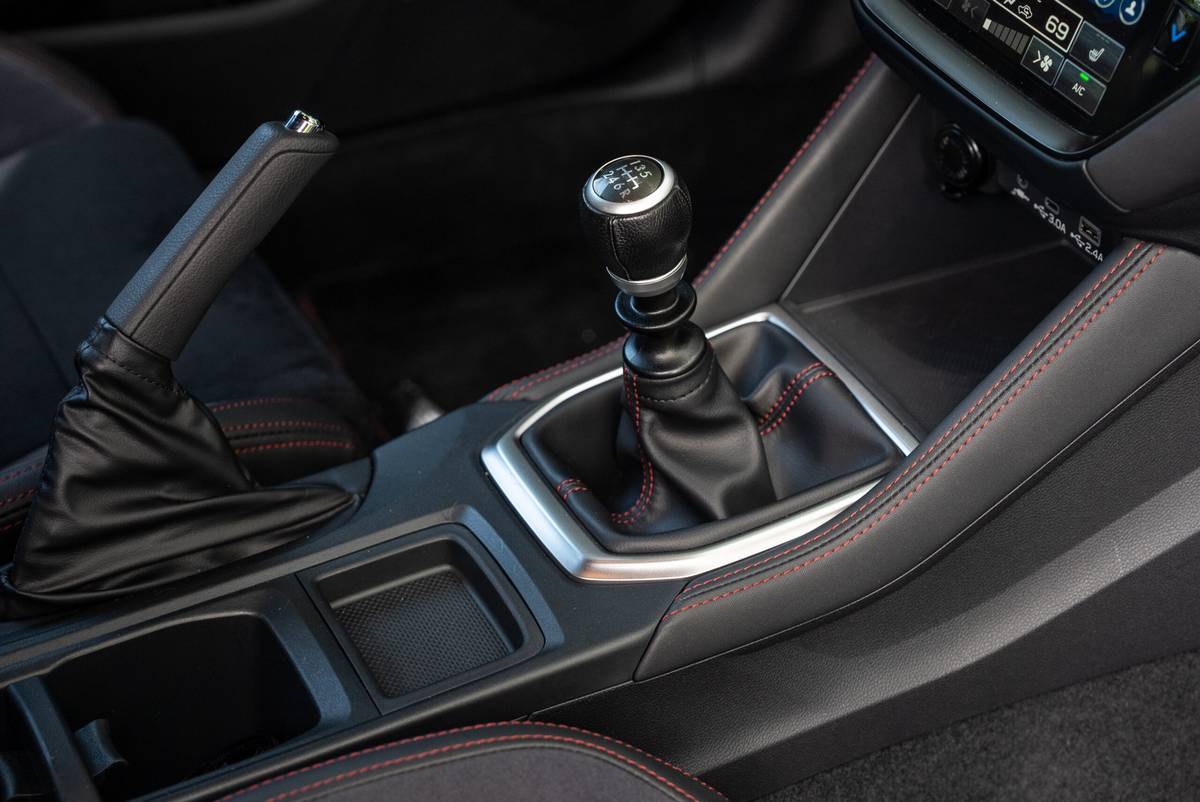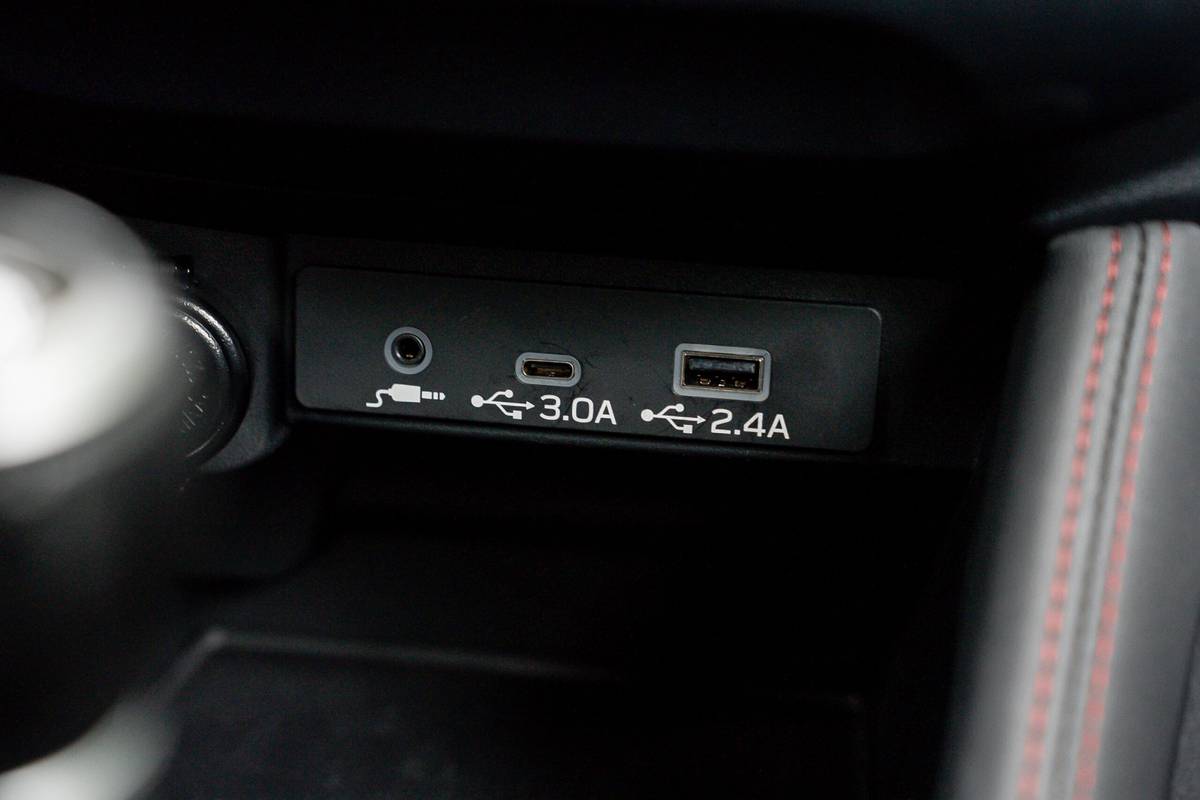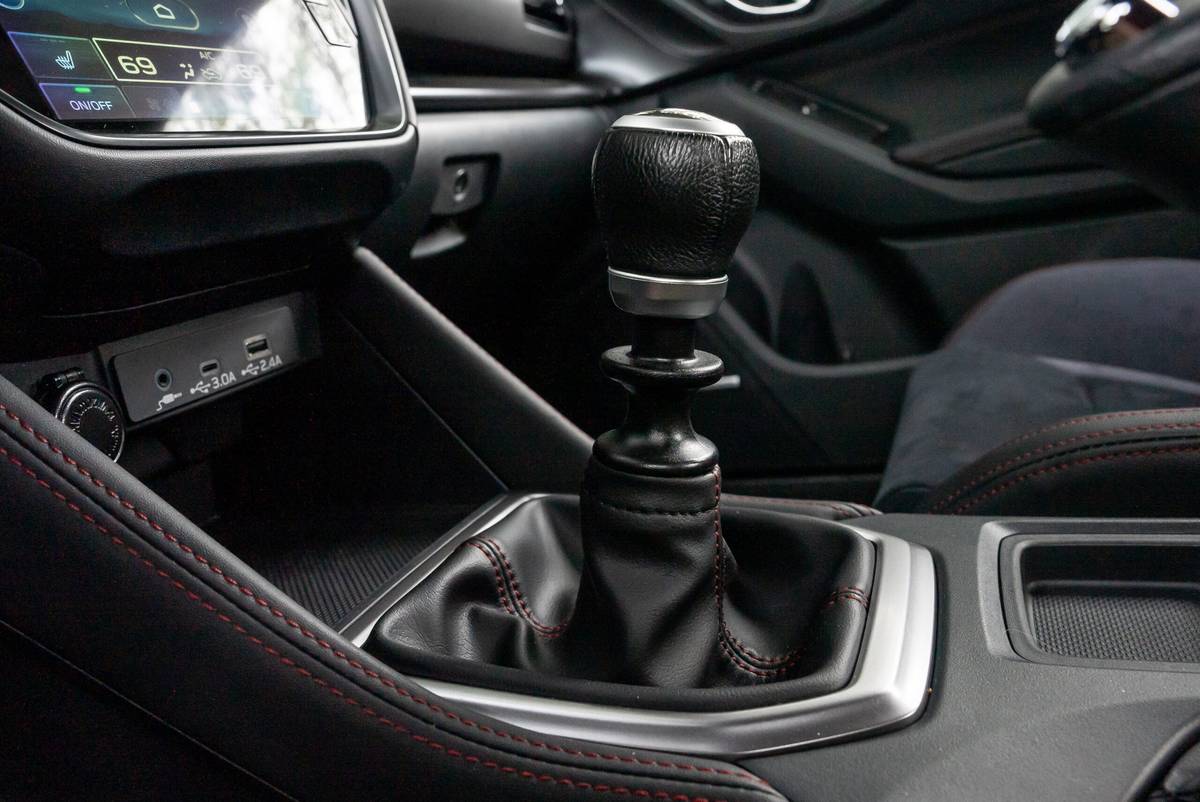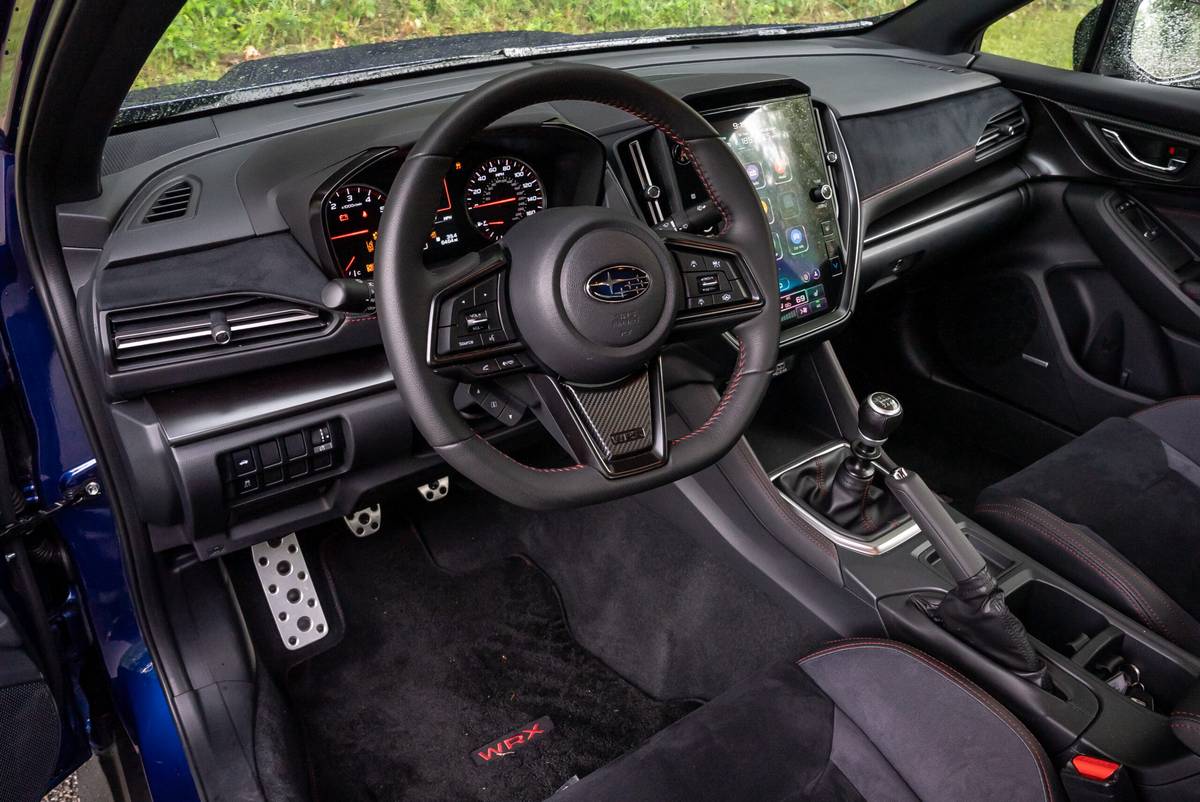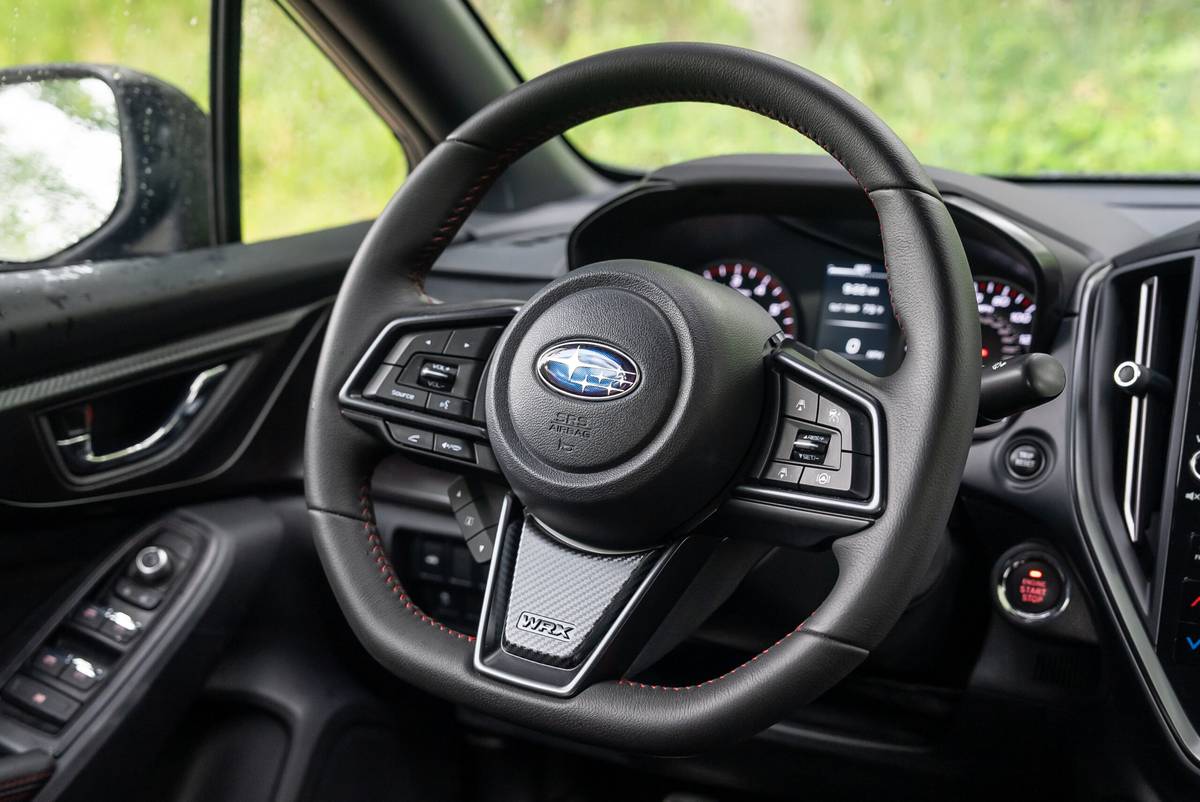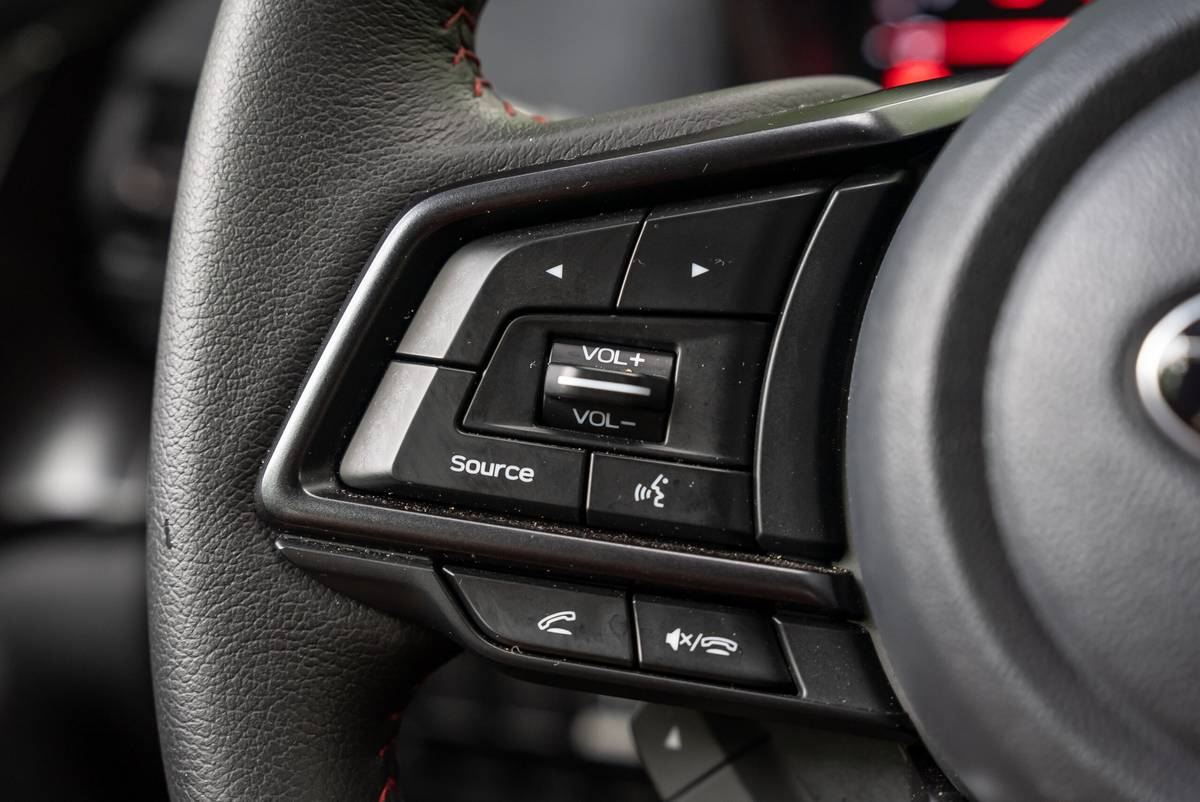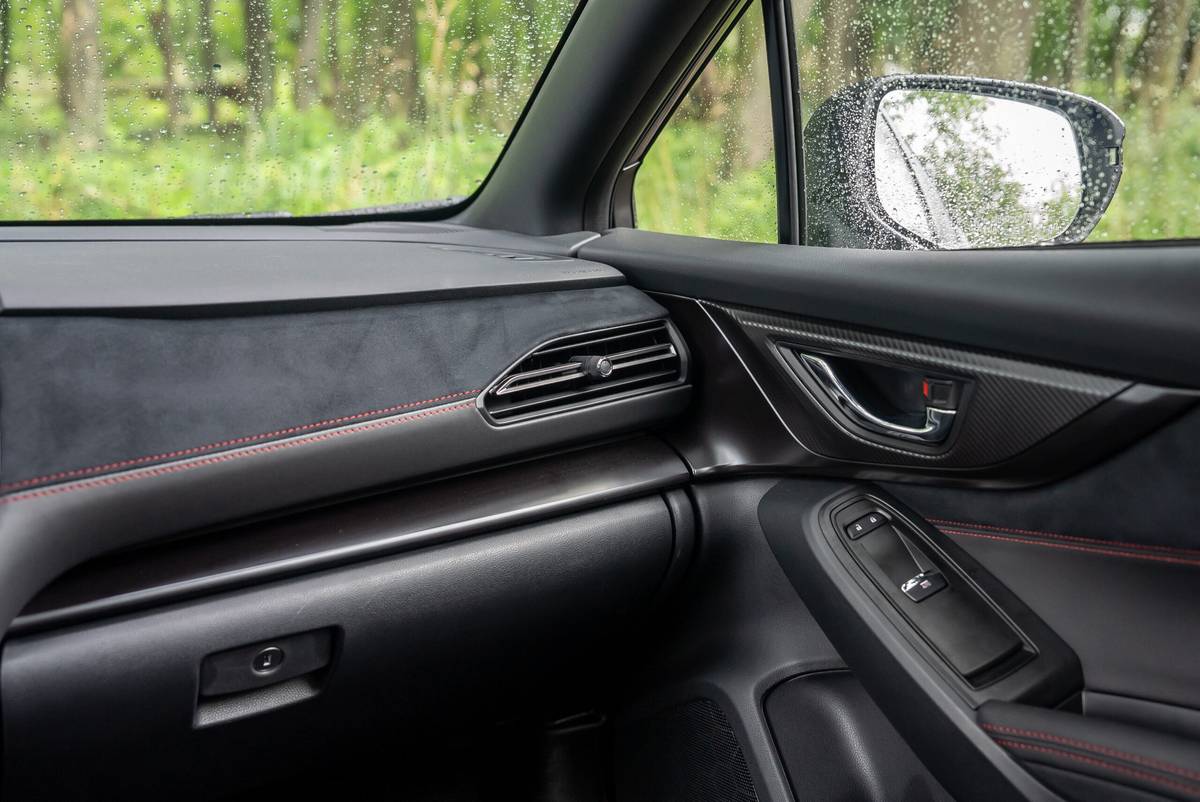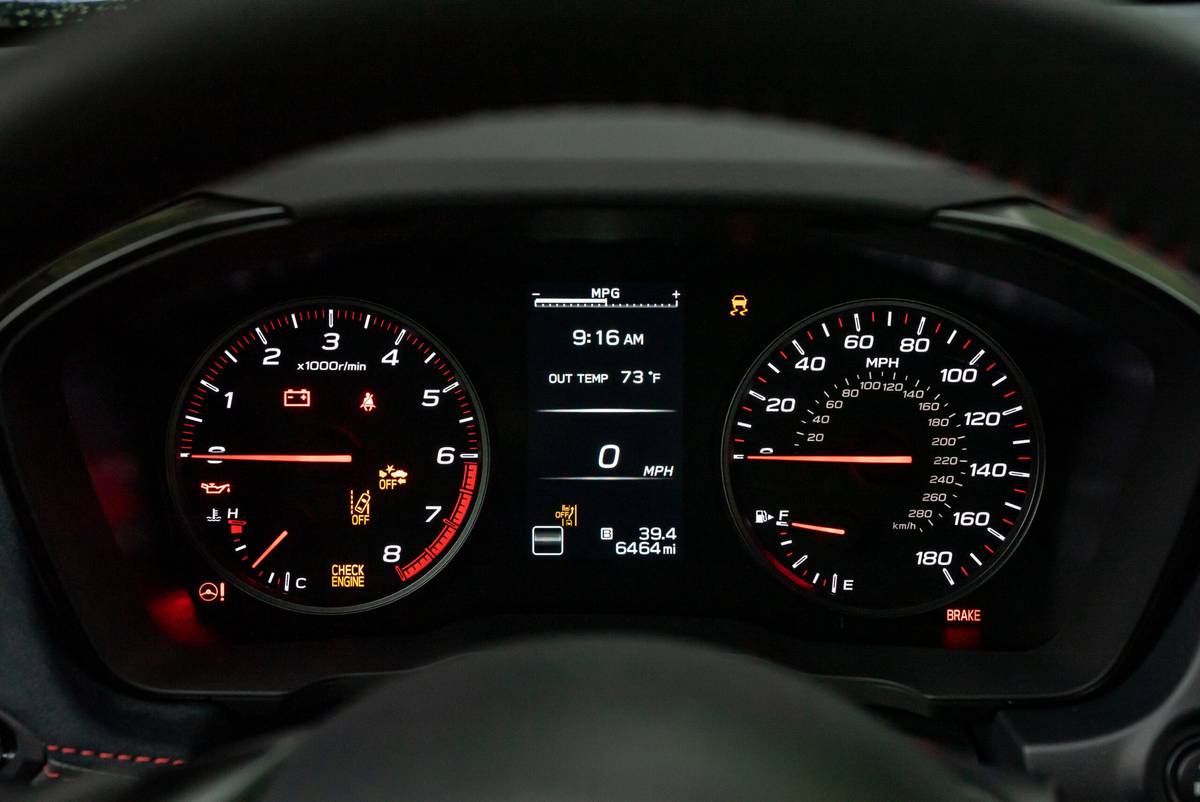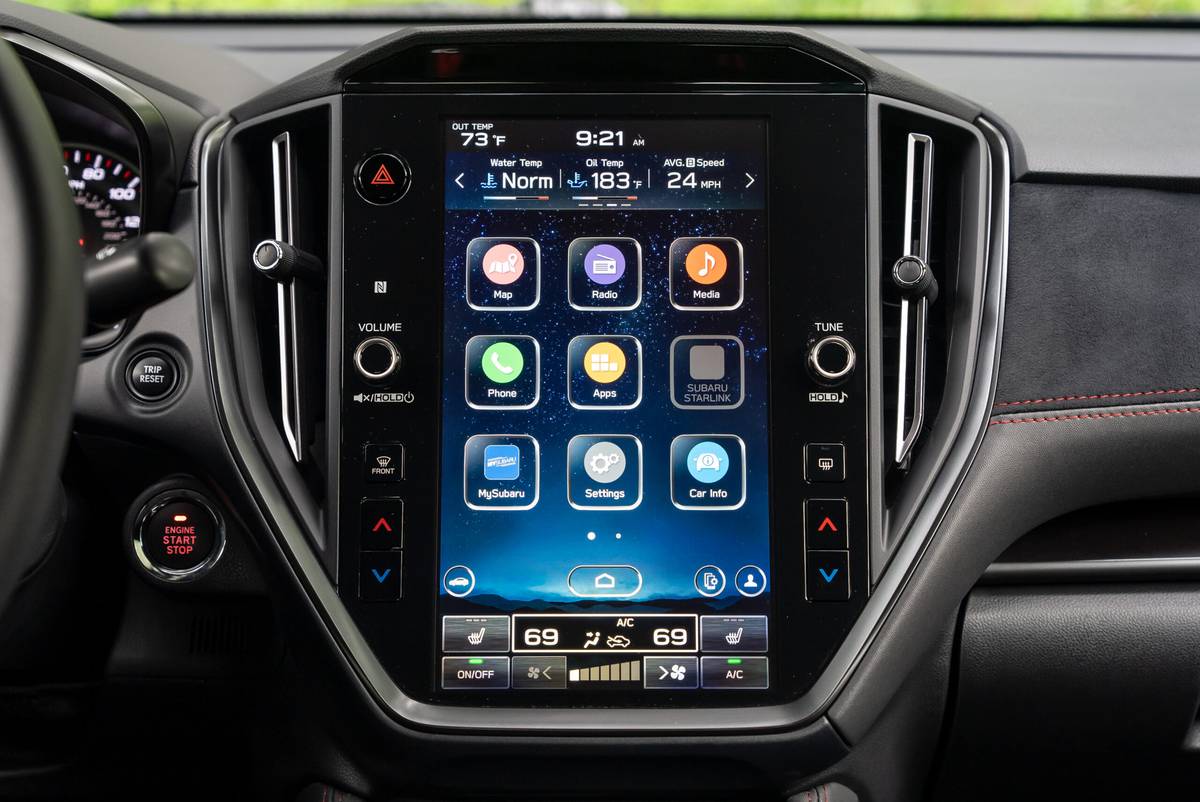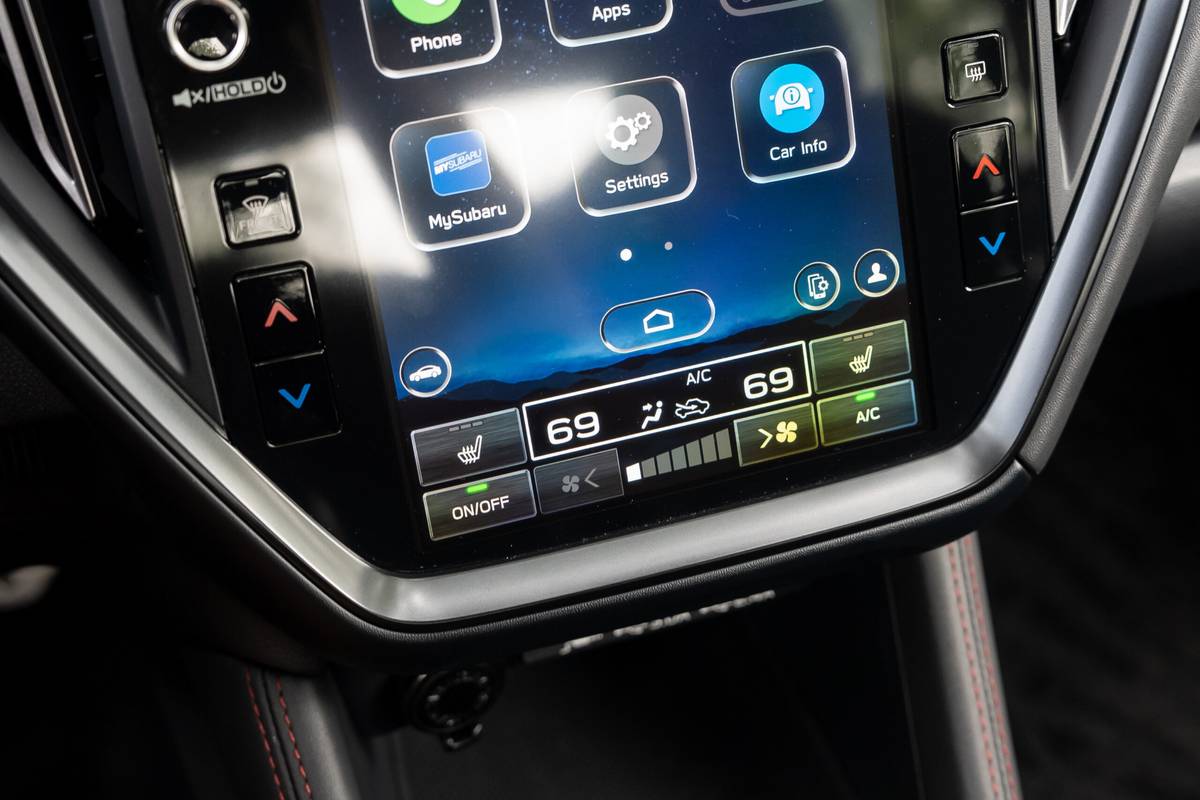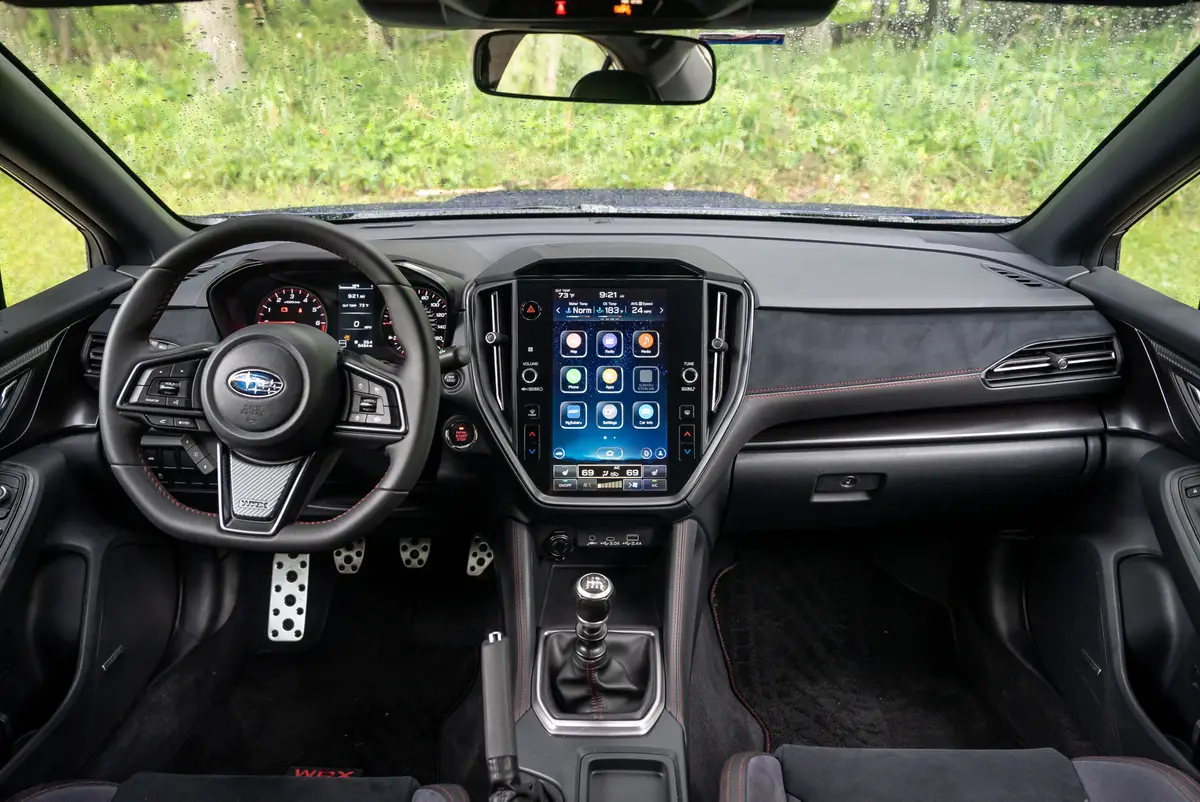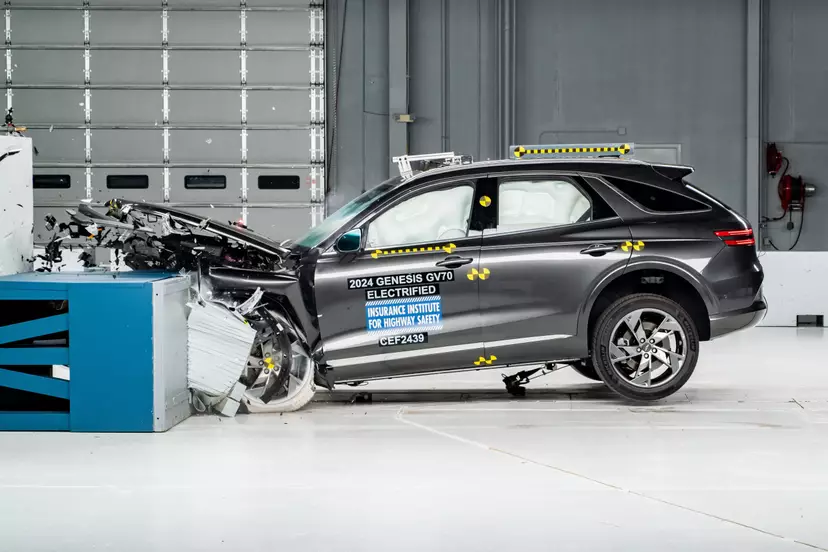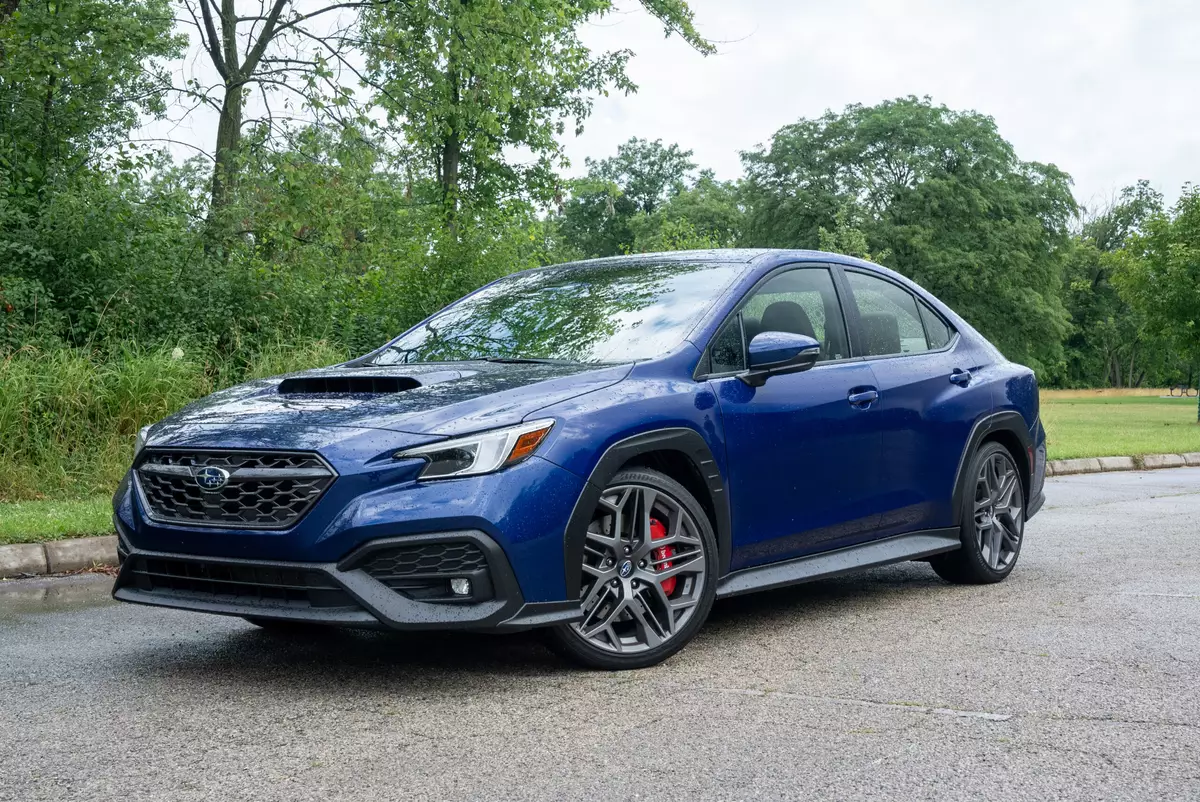
The verdict: The new-for-2024 Subaru WRX TR trim brings a sharper edge to the regular WRX — for better and for worse.
Versus the competition: In any of its available versions, the WRX’s standard all-wheel drive and distinctive rally-car-for-the-street personality help it stand out from other performance-focused compact cars.
When Subaru fully redesigned its WRX compact sports sedan for the 2022 model year, it made the car quieter and significantly more refined than the previous-generation model. For at least a few performance-minded shoppers, however, the new-gen WRX might have been a little too refined. When Cars.com Managing Editor Joe Bruzek reviewed the car, he praised its improved ride quality and more easily accessible power, but he bemoaned its numb steering feel and lack of distinctive engine noise. Subaru also disappointed enthusiast buyers by canceling its previously announced plans to produce a next-generation version of the WRX’s hotter STI variant — at least one with a traditional gasoline engine.
Related: 2024 Subaru WRX Gains Standard Safety Gear, Priced From $33,855
For 2024, Subaru has aimed to rectify some of these issues with the introduction of the new WRX TR, a manual-transmission-only model that adds a bit more edginess and athleticism to the basic WRX formula. Subaru previously used the TR suffix on a stripped-down, budget-priced WRX trim that launched with the 2006 model; back then, the initials stood for “tuner-ready.” This time, TR unofficially stands for “track-ready,” as the new car is outfitted for enhanced performance on a track. The new TR is not a price leader; it’s actually the second-spendiest WRX in the lineup, slotting about $2,500 below the line-topping GT trim.
I took a WRX TR on a 1,000-mile summer road trip to see how it compares with the rest of the WRX lineup, as well as with other performance-oriented compact cars.
STI Lite
The TR could be considered an “STI lite” version of the WRX. It gets an upgraded performance suspension for sharper handling, just like the departed STI, but unlike the STI, it doesn’t get a hotter engine. The swan-song 2021 WRX STI packed a high-output flat-four engine making 310 horsepower, but the 2024 TR has to make do with the same 271-hp, turbocharged 2.4-liter flat-four that powers other WRXs.
In place of the 17- or 18-inch aluminum-alloy wheels on other WRXs, though, the TR gets unique 19-inch aluminum-alloy wheels fitted with Bridgestone Potenza S007 summer performance tires. The brakes are upsize Brembo units with six-piston calipers in front and two-piston calipers in the rear, the suspension gets stiffer springs and revised dampers, and the dual-pinion steering rack has been tuned for better responsiveness.
Behind the Wheel
The net effect of these changes is predictable: The TR feels sharper and more nimble in fast corners than its siblings, with excellent AWD grip from its sticky performance tires. The TR’s steering is accurate and quick, but as in the standard WRX, it isn’t quite as communicative or direct as I’d like; not much feedback comes through the column to the steering wheel. Other sporty compacts, like the Honda Civic Si and Hyundai Elantra N, have a more playful feel.
Bruzek felt the same way after driving this TR and comparing it with the 2022 WRX he originally reviewed:
“Overall, the uneasiness on fast sweepers I reported in my 2022 WRX first drive is all but gone. That’s likely aided by the TR package, which also includes summer tires; the previous WRX I drove was equipped with all-season tires. What hasn’t gotten better (which I hoped would) is the lack of steering feel and feedback, as well as the minimal torque buildup in the steering wheel while you’re pushing harder into corners. It’s tough to know what the front tires are doing given how much road feel is isolated from the driver, which would be great if this were a family sedan or SUV. It’s not great for a performance car. There’s plenty of grip and athleticism in how the car handles, but it’s not reaching its maximum engagement with the driver because you feel isolated from the experience — while also questioning how much grip you have before it gets dicey and the car starts to slide (I didn’t get there on city streets). Because of this, I didn’t find it any more fun to drive than the standard WRX, though it was certainly more capable.”
A lot of feedback comes from the tires in the form of road noise, however, and that can get pretty tiring on a long road trip. Though the TR’s ride isn’t outright stiff, it’s taut at all times, and its short-sidewall performance tires kick up a lot of racket at freeway speeds. Sometimes, the road noise seems to reverberate through the whole body structure, making it feel like the ride is stiffer than it actually is. On some stretches of Interstate 90 in Minnesota, with concrete surfaces and expansion cracks, road noise was so loud (ka-chonk ka-chonk ka-chonk) I had to turn up the stereo — and let out a sigh of relief when the pavement surface changed to something quieter.
The TR doesn’t get any kind of exhaust upgrades, but to my ears, our test vehicle sounded noticeably growlier than my memory of the 2022 WRX. This gave the car a more overt performance attitude, though it was loud enough on a late-night cold startup that I worried about annoying my neighbors. When cruising on the freeway with the engine speed around 2,700 rpm, the exhaust note settles into a drone that can grow wearisome (especially on top of that tire roar). Such compromises are part and parcel of driving a sharply tuned performance vehicle, though, and on shorter trips, the TR’s enhanced handling chops are a hoot. It’s fun to toss it into fast corners and use that AWD grip, and it’s fun to row through the six-speed manual transmission’s gears with the car’s agreeable shifter and clutch pedal.
Interior Alterations
Inside, the TR gets Recaro front sport seats with synthetic-suede upholstery inserts and more pronounced bolstering than lesser WRX trims. The seat-bottom bolsters make getting in and out marginally trickier, because you have to slide your backside over them, but once I was seated, I didn’t find any of the bolsters overly confining; they held me snugly in place without feeling uncomfortable or constricting. The synthetic-suede upholstery, however, had me wishing the TR came with cooled or ventilated seats in addition to heated seats. The grippy suede helps keep your backside planted in aggressive driving, but it also gets uncomfortably warm on hot summer days — enough so that I had to lower the climate-control temp and turn up the fan to compensate.
Even so, the WRX’s cabin is a pretty pleasant place to be. Interior materials and overall fit and finish are quite nice for a mainstream brand, and the red contrast stitching and swath of faux-suede upholstery on the dash give the interior a just-right sporty ambiance. Another plus for tall guys like me is that the TR deletes the moonroof that’s standard on the Limited and GT trims. Subaru says this is for weight savings and a lower center of gravity, but it also frees up a precious extra inch of front headroom.
Another plus is that Subaru has made its EyeSight suite of driver-assist and safety features standard on all WRXs for 2024 (EyeSight was previously available only on automatic-transmission models). It’s nice to have the additional driver aids — especially on a stick-shift car, where they’re not common — but I occasionally found the lane-centering steering feature to be so intrusive, I turned it off; the system added steering input when I didn’t want it to.
More From Cars.com:
- 2024 Subaru WRX TR: A More Focused Rex
- Which New Cars Have Manual Transmissions?
- 2025 Subaru WRX tS: A Handling Package for the WRX
- Research the 2024 Subaru WRX
- Shop for a 2024 Subaru WRX
TR? Or Si, Type R, N, GR, GTI or R?
The WRX TR is part of a relatively robust class of hot-rod compact sedans and hatchbacks. Its $42,775 starting price (all prices include destination) is significantly more than the base WRX ($33,855), as well as the Honda Civic Si ($30,195) and a manual Hyundai Elantra N ($34,850). The Civic Si has only 200 hp, however, and neither the Si nor the Elantra N have AWD. The 315-hp Honda Civic Type R is a real front-wheel-drive track rat, but it starts at $45,890 and is more high-strung in day-to-day driving than the WRX TR. The 241-hp Volkswagen Golf GTI’s lineup is priced similarly to the WRX’s, but the GTI is also FWD-only. The top-dog VW Golf R has AWD and 315 hp, but it starts at $46,890. At $37,635 to start, the Toyota GR Corolla is also pricier than a base WRX, but it boasts standard driver-adjustable AWD and a 300-hp, turbocharged three-cylinder engine.
All of those cars are solid rivals of the WRX in their own ways, but none match its rally-car-for-the-street character. If you’re looking for something spicier than the standard WRX but find the TR’s ride a bit too taut, you might want to wait for the recently announced 2025 WRX tS; it gets the TR’s upgrades but also adds an adaptive-damper suspension with driver-selectable Comfort, Normal and Sport modes. This adaptive suspension was previously only on the line-topping WRX GT trim, and it should make the tS a bit more comfortable in everyday driving than the TR.
Related Video:
We cannot generate a video preview.
Cars.com’s Editorial department is your source for automotive news and reviews. In line with Cars.com’s long-standing ethics policy, editors and reviewers don’t accept gifts or free trips from automakers. The Editorial department is independent of Cars.com’s advertising, sales and sponsored content departments.














